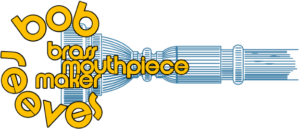[0:00:00] Tom Hooten: Hi Everybody. This is Tom Hooten and you’re listening to The Other Side of the Bell.
[0:00:19] John Snell: Hello and welcome to The Other Side of the Bell. A podcast dedicated to everything trumpet brought to you by Bob Reeves Brass. We’ll help you take your trumpet playing to the next level.
I’m John Snell, trumpet specialist at Bob Reeves Brass and I’ll be your host for this episode.
My special guests today are Greg Spence and Julie Baxes. We’ll get to Greg and Julie’s interview here in a moment after a word from our sponsor and some trumpet news.
Today’s episode is brought to you by Bob Reeves Brass who share your passion for creating extraordinary music. You know that feeling when your instrument just clicks and the music flows effortlessly. That’s what Bob Reeves Brass has been helping customers do since 1968. We’ve helped brass musicians like you achieve their dreams by ensuring their equipment is always in perfect harmony. We know you want to immerse yourself in the art of music making and we’re here to remove any barriers between you and your creative vision.
At Bob Reeves Brass, we work closely with you to understand your unique needs and provide tailored solutions like valve alignments, custom fit mouthpieces from our extensive stock models or a hand carved custom mouthpiece gap adjustments with the reeve sleeve system or even tweaking your existing gear, no matter your level of experience. We offer free consultations and serve musicians from all walks of life.
And if you’re looking for the perfect instrument to inspire your next musical masterpiece, we proudly carry the exquisite Van Laar line of trumpets and flugelhorn as well as the superb Charley Davis line of trumpets. What’s more Bob Reeves Brass is taking their commitment to your musical journey even further. We’re now offering a carefully curated collection of top notch products designed specifically for brass musicians.
You’ll find premium Gard Bags to protect your beloved instruments. A diverse range of mutes from renowned brands like Ullven mutes, Yupon and Okura Mutes from Japan, TrumCor Mutes, Rejano, Clary Woodmutes, and Charley Davis mutes, ensuring you have the perfect mute for every performance. But that’s not all, we’ve also got you covered when it comes to essential maintenance supplies with a handpicked selection of valve oils, lubricants and more to keep your instruments in tip top shape.
Bob Reeves Brass is truly your one stop shop for everything you need to fuel your passion and create music that touches hearts and souls. So, go ahead. Let us help you, elevate your sound to new heights. Don’t wait another moment to elevate your musical journey with Bob Reeves Brass. Connect with us at Bob Reeves dot com. Shoot us an email at info at Bob Reeves dot com and keep up with the latest news on Facebook, Instagram, youtube and Twitter at Bob Reeves Brass. Embrace your passion for music and let Bob Reeves Brass be your partner in creating the extraordinary.
This is such an inspiring episode. I can’t wait to bring Greg and Julie on here. But before I do, there’s a few things I want to talk about.
First, I want to give a huge shout out to our wonderful listeners. I mean, it’s no surprise. I tell you all the time, we have the best listeners in the world here on this podcast and we’ve known that for 10 years. Uh But in particular, last episode, episode, 100 I had asked for some help in transcribing the past episodes and future episodes. So we have proper transcripts online uh to make things as accessible as possible. And uh five individuals so far who have reached out uh And I want to give them a shout out: Ole, Dave, David, Nando and John. Thank you guys so much for reaching out right away and offering to help with your services and are actually giving me ideas about how to uh transcribe even better. So, uh we’re gonna be cranking through these past episodes and we still have room for more. There’s 100 episodes basically to transcribe and uh we’re going to be cranking through these. But if you’re still interested in helping edit again, you don’t have to transcribe yourself. We have automated software to get 99% of the transcript done. But it’s that last 1% especially. And to me it’s the important stuff, you know, players names, musicians names, teachers names, uh brand names, things like that, that the transcription software doesn’t quite get right. So it just skimming and kind of reviewing and editing and taking out all of my um and, you know, not that I ever do that, right. Uh So anyway, Ole, Dave, David, Nando and John, thank you so much.
Also had some uh a quick shout outs to some listeners, Gary who listens to this podcast in his custom saddle shop. Uh he puts the episodes on and uh listens to Trumpet Wisdom as he’s working away. And TJ, a good buddy of mine who was listening in particular to Phil Lasseter’s episode. He was driving down to Southern California from up north and was getting a lot of inspiration from Phil Lasseter’s uh episode a while back and uh popped into the shop to say hi. So uh shout out to those guys as well.
Ok. Some news coming up here in just about a week, uh week and a half, we will be visiting New York City. That’s right. Bob Reeves Brass will be doing a pop up shop if you want to call it that at our good friends at J. Landress Brass in Manhattan, the dates will be May 11th and May 12th right there in New York City, we will be doing valves alignments. If you go to J L brass dot com, there’ll be a, uh, sign up sheet, uh uh a Callendar where you can book an alignment. We have very, very limited spots because we’re only there for two days. So if you’re interested in doing a valve alignment, while we’re in New York City, go to J L brass dot com and sign up for one through their calendar. We will also be bringing trumpet mouthpieces, trombone mouthpieces, horn mouthpieces, in particular, with the trumpet mouth pieces, we will be bringing the new Dan Rosenboom boom star mouthpiece uh to have for you to try and potentially purchase if you like. We will also have the our other artist models, the Bobby Burns mouthpieces, we will have the new 19 backbore, which is our new lead commercial backboard. Uh Again, we’re bringing over 350 mouth pieces just for trumpet alone. And if you have a trombone and horn friends, we will have a selection of those mouthpieces as well as always, we’ll bring the sleeves, the receiver rings, the uh the the cylinder reinforcers, all the stuff we make we will have at Josh Landress shop. Uh So again, all the details will be at J L brass dot com. We’ll have the link in the show notes and in the description of this episode. We hope to see you there.
Next month in, in June, we will be going to Tokyo. That will be June 17th to June 25th. We’ll be there almost nine days at our good friends Joy Brass in Tokyo, same deal, valves alignments, mouthpieces consultations, all sorts of fun. We’ll have more details of that in upcoming episodes. So if you are in uh Tokyo or anywhere in Japan or able to get to Japan, we look forward to seeing you at Joy Brass June 17th to 25th.
Another quick thing I want to mention here is we have some new orchestral mouth pieces and we had AAA very popular classical series uh that has common sizes 10.5 C, 3C, 1.5 C and so forth. And in the last year or two, we’ve been developing some, I would say purely orchestral mouthpieces. So larger hole sizes, larger backbores. So we have a 3C, 1.5 C 1-1/4 C and 1C now available with 25 & 24 bore sizes and the popular 24 backbore, which is our version of a 24. So if you’re in that kind of market, you play a lot of orchestral stuff. Uh I hope you’ll give those a try.
- That’s all the news I have today. And before I get to my guest introductions, I do want to say even though this episode is primarily focused on musician’s Focal Dystonia. Uh I would uh ask that even if you don’t have Focal Dystonia have no one and have no interest in it. Uh This conversation that I have with Julie and Greg is I, I would bet is gonna be inspiring and useful for any brass player and really any wind player out there. Um I mean, I learned so much from my own playing just listening to the experience that Julie has uh and Greg’s Solutions and what they’ve been working on together and the experiences they’ve had. So with that, let’s get right to our interview today.
We have a truly special episode for you as we’re sitting down with Greg Spence and his student, Julie Baxes. Greg, as many of you may know, has had an illustrious career in music, both as a performer and an educator. He’s graced stages all around the world including 15 seasons as the lead trumpet player on dancing with the stars, the Australian version and performing at Carnegie Hall with the Adelaide Symphony as well as performing with every major Australian orchestra. His impressive resume also includes collaborating with world class artists such as Herbie Hancock, Katy Perry and Wayne Bergeron. But Greg’s passion for music doesn’t stop it performing. He is equally dedicated to sharing his knowledge and expertise with the next generation of musicians with his wind works support network. Greg has made a significant impact on the lives of countless musicians through his weekly Sunday sessions, master class and teaching Tuesdays live. His goal is simple to help you get better results faster. T
oday, we’re also thrilled to have joining us, Julie Baxses. Julie describes herself as a serious amateur trumpet player who has musicians focal dystonia. And over the last few years, Julie and Greg have been working together to figure out ways to improve uh both figure out the causes and symptoms of focal dystonia, but how to recover from it. And they’ve made incredible progress. Uh And we’re talking about thousands of hours of research and working together over the last few years. So they are here to, to share with us hints and tips and experiences uh that I think we’ll all find inspiring. So without further ado here’s my conversation with Greg and Julie.
Well, this is gonna be such an awesome episode of the other side of the Bell joining me. Uh We’re multi continental, I guess if that’s a word. Uh we have Greg Spence joining us all the way from uh Australia, Greg. How are you doing?
[0:11:03] Greg Spence: I’m doing so great. Awesome to see you again, John.
[0:11:07] John Snell: Uh So awesome having you here and also joining us is Julie Baxes. Julie, thank you for joining us.
[0:11:13] Julie Baxes: Oh, great.
[0:11:14] John Snell: And uh today is a kind of a special episode we are talking about focal dystonia and um so kind of to provide some context. Greg was a previous uh guest on our podcast here at a number of years ago. And I highly recommend you listeners listening to that episode, we talk about Greg’s career and then how his uh career kind of evolved into his mystery to mastery program. And in this episode, we’re kind of gonna pick up where we left off because in the last few years, Greg has developed into helping people with focal dystonia and done some really groundbreaking work in that arena. So, um with all that being said, Greg, would you start us off first by telling us a little bit about uh focal dystonia for some of us that may have never heard of what this is.
[0:12:00] Greg Spence: So it goes back to the start of quite a few years ago and I got an email and someone said Greg, do you know what uh focal dystonia is? And and Julie will want to jump in and say we’ve got to call it musicians focal dystonia. So uh I’ll get her to explain that a little bit later on. But I got this email saying Greg, have you heard of uh focal dystonia? And, and the story that I tell is my reply was no, but it sounds delicious. Now, I don’t actually think that I said that but I had never heard of it. And I actually just replied saying, no, I’m sorry, not sure what you’re talking about. The universe was screaming out to me. And unfortunately, at that stage, I ignored it so then fast forward several years. And I was fortunate enough to travel around Europe in 2015 and then get invited to the US to do a, a school and university tour and, and uh play with the I T G and do the Carmine Caruso um jazz competition. And so I was playing lead trumpet in the big band there with Bobby Shew, and Ingrid Jensen, Clay Jenkins. And I was going around doing a, just a couple of uh average names in the game. So it was a, it was a smoking band in, in uh at Sam Tech at Sam Houston University and a real thrill to play that gig. Um And, but I’d gone around and done master classes at all these different universities and without fail, I was hearing the term focal dystonia. I was at Flagstaff and got to meet David Vining and I got talking to him and I’m like, man, I’m, I’m hearing all about this condition. Um And it, it was just about every university and my belief at the time was that it was an overuse condition, just people playing inefficiently and they just couldn’t play anymore. The, the chops stopped working. And so the way that I teach and I’ve, I’ve, I’ve got a, I sort of break teaching down and uh I’ve got this concept called The Cycle of Tees, which is technical everyday elements. And I just break down playing into little bite size bits of everything that we can do anyway. I’m at the airport coming home and I get a message from someone going Greg. Thank you for everything that you’re doing for people with focal dystonia. I’m like, what am I doing for people with focal dystonia? I don’t understand, you know, the way. Right. Right. And so it turns out that the way that I pull playing apart and just look at the individual elements of playing is what’s really important for people with musicians, focal dystonia. And, and so I got, uh, home late 2015. Um, 2016, I was slightly curious about it but didn’t really do much research. Saw a little bit here and there and it wasn’t until, uh, 2020 where Julie and I were, were talking, we actually met in 2015 and 2016 in Colorado. And even at that stage, uh, I’d noticed we’d had a couple of lessons online and I recognized this hesitation in her playing and I started calling it the systems check because the instrument would come up and then there’d be this pause and you could tell the wheels were turning. I’m like, what are you thinking about? Just put it on your mouth? Right. And so this was pre duly developing the condition again. She’ll tell you about this. But that was the, the start of my data collecting inadvertently and it wasn’t until 2020 when we caught up again, I was traveling and, and gigging all the time. So our lessons couldn’t sort of continue regularly. So we lost contact and then I reached out at the start of COVID, um, cos I was home and I’m like, oh, just check and see how Julie is going. And there were some things that sparked my interest at the start of the conversation and then by July I’d had enough knowledge to be able to unfortunately diagnose her with musicians focal dystonia. Now that’s a tough thing to do. Given the fact that I’m not trained in this game. I’ve just got instinct as far as learning the learning process and the teaching process goes and it just happens. So happens to go hand in hand with um with the way that people need to recover from musicians focal Dystonia. So that’s probably a a good spot to, to, to bring Jules in.
[0:16:46] John Snell: Yeah, I was gonna say so now with that context, uh So Julie, yeah, can you take us through this process of where, where you were at with your playing and then how the musicians focal dystonia developed?
[0:16:58] Julie Baxes: Sure. So I was what you would call a serious amateur and I had been progressing subtly through better and better groups, more competitive groups, groups that required some auditions and I was doing gigs and studying with a symphony player and there was always just something lurking in the background and it’s, it’s hard to say with this exactly where, what the, the route is. Although I think Greg has an idea of what that is, but I had a few negative music related experiences and some other things. Um and just the pattern of self doubt, especially in exposed playing situations, it was up and down, I’d have some great solos and then other times wasn’t feeling confident. So I think it was a, a real fusion of a, a number of different inputs. It’s, it’s really not easy for somebody to get off of a healthy path and go down the focal dystonia path. It’s, your brain does not want to change, it wants to stay where it is. So there are lots of people, for example, that have performance anxiety and do not develop this. So it’s, it’s really a fusion of a and, and a tangle of a number of different things. Well, I really noticed my symptoms turning up the year before I connected with Greg. So I was playing in a British style brass band. We do performances all over town, sell tickets to our concerts. And I noticed that in rehearsal, I would go in and I would just start shaking and the shaking was coming from my upper body. It happened when I brought my cornet up to my face and it, it was something that once it happens a few times, it’s not anything that you are controlling. So you’re on edge thinking that’s gonna happen again. And it’s amazing that the body is amazing because the body will adapt and it will compensate for things that are not efficient. So in my case, I was adjusting my posture, I was, I was playing at a, at an odd angle and I would do that for 10 minutes or so and the symptoms would dissipate. Then I was fine. I felt, oh, everything is clear. I can play, no problem. So that pattern continued and that showed up at, at jazz band rehearsal, concert band rehearsal. And then we got to a performance at a large venue here in the Denver area. And for the first time in a dress rehearsal, my symptoms showed up and I had not seen that before, but what was most pronounced was, was a shaking, shaking at the base of the neck. And so I was, I was distorting my posture to, to get through dress rehearsal. But that is the first time I had seen that. So I was on edge for the performance. And that’s, I’ve never had that before. Just wondering, is this gonna show up again in the middle of performance? And so it was not my favorite performance. Needless to say, then what happened is the symptoms started migrating into my practice room which up to that point had been unscathed, but I started seeing the symptoms there and it was, it, it kept developing to the point of I was budgeting 20 to 25 minutes of chaos before I could sit down and really play my music because there was a shaking, avoiding the mouthpiece, you know, pulling away. Um, almost like, um, you know, riding a bucking bronco in a sense. So I, I would anticipate that and that time just kept getting longer and longer and I continued to play and a, and a lot of folks will do that. I continued to go to rehearsal, but I did reach a point, a, a lesson when I just shut down. And then there was about a five day stretch where I just couldn’t play at all. Fortunately, that was short lived, but nonetheless, my body was not going to let me play the instrument. So, and along with this, there’s the physical symptoms of the shaking and the anxiety about is that gonna start, it’s also, there’s, there’s so much emotion and psychological impact because you’re, you’re switching from a self confidence standpoint to one of fear and trepidation and what’s gonna happen and it just sabotages the playing experience and it obviously interferes with your ability to, to play and perform. So it really was going downhill. And before Greg contacted me, I had already dropped out of two playing groups and I was staying in the British style brass band. And when we started to work together, I, I continued on for a while, but then I made the decision that I needed to leave if I was really going to properly address this. And I also wanna say that the term focal dystonia is somewhat of a misnomer. In a lot of cases, it’s focal because, you know, you, in my case, it’s the trapezius muscle. The left tope muscle was, was um the one that’s activating. So you feel the contraction and shaking, but there may be more going on in the system and there likely is more going on. So at the time, I didn’t realize that my breathing was compromised actually, I did realize my breathing was compromised, but I didn’t realize to what extent. So another symptom that I had towards the end is that playing through a piece, I had trouble breathing into the next phrase. So I was fine taking the initial breath but to try to play through an entire piece of music got very difficult. I literally almost felt like I was suffocating like I just cannot take in enough air. And that is because the abdominal area was tightening so it couldn’t expand. And so I wasn’t able to breathe properly. So that was another symptom that happened. And this all just came to a head about the time that Greg reached out and sent me an email, which was so incredibly fortunate for the timing is just amazing.
[0:23:42] John Snell: Like right when you need that, then Greg reaches out out of the blue, basically.
[0:23:49] Greg Spence: Yeah, the universe um has a way of making things, making things happen, I believe and like through the whole COVID time, um I was obviously we had time to, to do things. Uh I was right in the neuroplasticity uh zone. I’d actually, when I was over Bobby um had mentioned he was reading a book on neuroplasticity and it’s like, oh, it just so happens. I’ve been doing all this research in neuroplasticity as well. And so I did a um a little golfing adventure and taught myself because a lot of what we do and, and this is the essence of making really high impact changes and, and I, I, I, I need to say this out loud for people that are listening that do not experience focal dystonia that the learning process is focal dystonia is an extreme uh case of needing to create new habits, right? Because the old habits aren’t working anymore. And a lot of people refer to it as death of the musician. You once once were, which is pretty brutal. But those that have experienced it would agree that it, it, it kills the musician that you were. You don’t want to build that back. You wanna, you wanna create the new musician and do create new neural pathways. So the whole process of creating new habits and this is where I, you know, there’s so many skeptics in what I’m teaching and I get, you know, really poo pooed at times because what I’m getting people to do feels different, it feels different and it sounds different to what they’ve done before. So I’ll have people come to my website and go Greg. I wanna change my playing. I’m, like, great. Let’s get into it and I do something, I’ll show them a video and it’s different to anything that they’ve ever seen. And they go, oh, that can’t work. That feels ridiculous. It’s like, do you, well, we need to change the way we’re doing things and think about things. If you want to change your playing, you can’t keep doing the same thing. That’s irrational. Right? So there is a phenomenon of strangeness and so a lot of the drills that I do feel strange. That is really cool for people with dystonia because we do things that feel strange and it doesn’t trigger the initial pathway cos it doesn’t suggest playing. This is really powerful. It’s really cool. So I’ve got people that have got, I’m, I’m teaching a guy in Munich at the moment who’s principal trumpet player of a, an orchestra can’t play for four years. Reaches out in three months. He’s back on the horn sounds improving and he’s playing to g above the stave, there are issues but the tremor’s gone, but he’s had to rebuild his playing. Tremors come back a little bit occasionally, but we jump on them the minute that I had him doing this thing that I call the four ways, shape the mouth in a different way. That doesn’t feel like playing. It feels strange. Therefore, it’s not threatening and I use this with everyone who comes to win works because we need to break down the foundation, the fundamentals of what we’re actually doing to create, to what, what we wanna do is get a musical message from the brain out through the bow. That’s all we’re doing a musical message from the brain out through the bell with no resistance, either physically or emotionally. There’s, there’s the, you know, spiritual enlightenment of, of brass and being a musician
[0:27:23] John Snell: really. It’s a, it’s a combination of the both, right, the physical environment, you can get resistance in both and that’s a
[0:27:30] Greg Spence: 100%. And, and so my whole philosophy on teaching brass is we’ve already got enough strength to play the instrument. We can squeeze our lips together, blow as hard as you like, you can’t blow your lips apart. I call it the air lock, right? You can’t blow your lips apart. If you wanna lock the lips from leaking, we’ve got enough strength to play then. So all we’re doing is learning how to unlock that strength. And so my whole teaching is based on getting rid of the errors that we’re making. Right? So I’ve diverted a little bit, but the, the essence of it is over, over COVID to experience the sensation of strangeness. I’ve moved up to a place called Coolum Beach above Brisbane and I thought I’m probably gonna be playing a bit of golf. And I’ve been playing golf for 35 years and I’m terrible. I’ve never had a lesson and I’m awful at it. I’m gonna start from scratch and I’m gonna do it left handed. So I put a, a post on my forum going right to demonstrate the wind works, which I should call swing works. Um, learning process. I’m gonna demonstrate, I’m gonna teach myself to play golf left handed. So I filmed it all and it feels ridiculous. And that, that email was at a, at, at the Qantas Lounge in Sydney and I started watching a couple of videos about grip doing it left handed. Felt insane. Excuse me. I’m not ambidextrous. I’ve never done anything left handed. So that’s very important that people understand. It’s about recognizing and appreciating the strangeness with the psychology of this must work. This must work if I get the process right ball will go right. So the cycle of teas, technical everyday elements is based on the golf, swing teas, obviously golf tees or playing trumpet. It was all for a purpose. It was all strategic, right? So over this period, I, I just, I’m gonna pat myself on the back and say I got my handicapped to 18 and won the B grade club championship at my local golf course in two years. And that to have that trophy in two years and to put that trophy on my website under the forum where I’d said I’m gonna do this to, to have that trophy, kind of hopefully gives a little bit of cred to the learning process. So the process is that that left hand. Yeah. And I’ve got a better, I’ve got a better, better swing left handed than what I ever had right handed. So, but how did I do it? Watched a lot of professionals had a visualization in my head of the desired outcome. The goal filmed myself where I would be convinced that I’m doing the right thing and you watch it back and go nah, that’s not it. And then you’d go back and you’d watch and you’d film and you’d make these adjustments that feel so ridiculous. You go can’t be right. And then eventually you do something that feels so out and you watch it back and go, just do that. There it is just do that and everything that Jules and I work on is finding the correct process no matter how ridiculous and crazy it feels and you repeat, you repeat, you repeat.
And as I mentioned in our email before we started the, the, the concept of the 16 8, the 16 8 is where in general, let’s say we’ll generalize here that musicians and humans are generally awake 16 hours a day and we sleep eight hours a day. So people go, I don’t have time to practice while I go. That’s absolutely nonsense because all the practice room time is, is discovering your errors. We fix the errors outside the practice room, we can sit there, we can find an error. We can find a little trick that might fix that or fix that or fix that, but that’s not stored yet. You gotta think about it when you leave the practice room and the neural pathways get delivered when, when we sleep. So we can practice. Once we’ve found the errors, we can walk around and work on tongue position, mouth shape, fingering combinations, you name it whatever errors you’re making, you can work on it outside the practice room, repeat it, visualize it. And then when you wake up the next day, you go to the practice room and you come in and go is the error still there. And if it is, you get frustrated, it releases epinephrine and Aceto Colin and all these frustration brain chemicals, then you approximate the desired outcome that releases dopamine, which sends the message to the brain going just do that. We’re on the right direction. You get excited and it starts to create the new neural pathways. When, when you think about it outside the room, you keep living the experience, you go to sleep, you come back the next day to the practice room and the error might be gone. Cool. Then the next day it might be back again. Hello. Welcome to the learning process. So that’s um my life
[0:32:44] John Snell: that, that’s fascin, that’s really fascinating. And, and uh I mean, it almost sounds like that it um similar in the, the neuro linguistic programming, you know, that we’re re, we’re retraining our brain to the positive outcome. Um And, but, and in some cases, like literally in your, you know, by watching videos or watching videos of yourself. Um That’s, that’s fascinating. This is really exciting. Um So Julie, let me, I’m gonna go back to you because now I, you know, having heard what Greg talked about with his, his training and uh his golf awards and stuff. Uh So what did that look like to you in your lessons? I mean, what kind of uh changes were you making in your practicing and your approach to the trumpet?
[0:33:31] Julie Baxes: Oh boy. Um I’ll try to keep that succinct. So the, the, the lessons have been really multifaceted because with something like this, you are looking at the playing psychology as well as the tech, technical execution. So in my case, and I did wanna mention my, the focal dystonia that I have experienced is in the left trapezius muscle, which is a large muscle in the back and it plugs into the neck and it plugs into the shoulder. So what triggers, what can, what has triggered that is the whole lifting motion of bringing the horn up to my face. And initially, when Greg and I started working together, anything coming up to my face. So I couldn’t do this, forget it. You know, I would be trying to avoid it, pulling back, um, shaking couldn’t keep a, a normal posture. So we, we had so much to tackle and I mean, it just was incredible. But really, initially, I would say there was a lot of time spent on what’s called desensitization. So getting my, my uh nervous system used to hands coming up objects, coming up, pins, mouth pieces, all of those things. And then a lot of work on the emotional piece and the headspace piece. And that’s one thing that’s unique about Greg is that he is so holistic in looking at the playing psychology as well as the, the, the playing machine, not just from a technique standpoint, not just from a muscular standpoint or breathing, but also from a headspace standpoint. So we spent a lot of time really setting the stage for being able to move forward. And there were, there were a lot of steps involved with that. I didn’t want to show him my symptoms. And this is not uncommon. It’s embarrassing. It’s easy to personalize the symptoms and think that it’s somehow it’s a failure on your part. And I had a, a very difficult time showing, letting colleagues see it, letting Greg see it. So it took months of him chipping away maybe longer than that for me to fully put all the cards on the table and show them exactly what this was. And, and it’s, it’s a frightening initially, it can be a frightening experience to really look at it uh closely. So we have, we have done all kinds of things, John, we have experimented with crazy things. Um you know, that everything from putting a sock over the mouth piece so that it, it reduces the feel of it to putting a, a mouthpiece in an elastic band and putting it around my face like a mask to putting the bell on a, a music stand. Yeah, I actually have it in my drawer still putting the bell on music stand playing in odd positions. And I would say really once we determined that it was focal dystonia, which was actually later confirmed by, by some other people in the health field, then we could really start, we, then we understood what we were working with and we could start experimenting and, and really looking at it to understand what are my triggers. What happens when I get triggered? What exactly happens? Not just though I feel tightness back here and tightness at the base of my neck, but what is the full picture of what’s going on because you can’t develop strategies if you don’t have an assessment of what’s going on. And it takes some time to really be able to take a comprehensive view and a diagnostic view and emotions get in the way. And then it’s also just your perception is changing. So it’s like peeling an onion, you know, you take off another layer and there’s more there and there’s more there and there’s more there. So initially, when we started, Greg would ask me to play something. I would try to bring the horn up. I have video of this. I’m kind of in a crumpled position. My head’s down there is no way in heck, I’m gonna get the mouthpiece up there and I’m just trembling and I’m giggling at the same time. So, uh what, what can happen with this is that again, the brain doesn’t want to change. So if you’re on this faulty pathway, it doesn’t want to get off of it. So there’s all kinds of defense mechanisms that can fire up. And the giggling is one having thoughts about doubting thoughts, I’ll never get through this. I’ll never be able to do this. I’ll never play again. All of those will will launch constantly. So we started with, with me in the corner trying to play. We worked on understanding what the triggers were, what happens when I get triggered. And we also worked on breathing and that was early on because we realized that the breathing was really shallow, it was constricted and sometimes people can do what is called reverse breathing. So instead of expanding on the inhale, you’re actually contracting and then expanding on the exhale, which is not what you wanna do. So that can happen, that can easily happen without you realizing it. So we worked a lot on that and, and just continuous work on playing psychology and as we have progressed in time, I’m at the point now where I’m playing through music, I’m still working on desensitizing some issues and turning those off. But when I looked at our session from the other day, there’s just such a substantial calmness in the system now that wasn’t there. And it’s just really incredible from our starting point.
[0:39:53] John Snell: Interesting choice of word, substantial calmness. I mean, that’s, that’s really it.
[0:40:02] Julie Baxes: Right. I mean, uh, fromhead to toe, from head to toe and,
[0:40:04] John Snell: I mean, I, I have to, I mean, Julie, you’re just amazing, like, you know, to be so open and honest about your experience. And, I mean, frankly, I, I mean, look, I, I don’t understand, uh, the world sometimes but, uh, I mean, there could be, uh, a, a stigma attached to focal dystonia and we’ve seen it, uh, with, uh, I mean, you call yourself a serious amateur but, I mean, we’re all musicians, right. You know, whether we’re, uh, whatever level, whether we’re getting paid to do it or not. And, uh, certainly in the professional realm, uh, you know, when there’s a career tied to your, you know, your success in playing, I mean, people don’t talk about it, people disappear, you know, off the scene and don’t want to talk because they don’t want to admit either that they have a problem or that there’s a mental aspect or a weakness or that sort of thing. And Um So the fact that we can just talk about this openly is, is really amazing and I know it’s gonna help a lot of people listening. Um So again, thank you. Um
[0:40:59] Julie Baxes: Absolutely.
[0:41:01] John Snell: So, uh so, so Greg, uh I mean, there’s so much to unpack here, we could probably talk for eight hours. Um You know, I mean, it sounds like, I mean, because there’s the mental aspect, there’s the breathing aspect, there’s retraining aspects like where do you start? You know? I mean, is it just kind of multi pronged attack or what, what is it?
[0:41:22] Greg Spence: It’s a great question, John. Um well, we start with stillness. You start with stillness and stillness is very difficult for a lot of people. You, you, there are people that have anxiety walking towards the practice room, they’ve got doubt, they’ve got confusion. This is non dystonia people, right? They, they’re confused about what to practice. They don’t know what to practice, don’t know if they’re gonna get better, you know, and, and so we’ve got to get rid of any negative thoughts first of all. So we we, we gotta get a clear mind and I talk about a lake. We just want no ripples on the lake. We can sit there with absolute calm mind and uh no involuntary or unnecessary muscle activations in the body. Can you sit in complete stillness if you’ve got a a uh an essential tremor, which is an interesting one. If you’re sitting there and your, your head’s doing that. I can’t fix that. That’s not, that’s above my pay grade. But if that starts to happen, the minute you think about trumpet playing or it playing an instrument, then I’m your man. Right. Because it’s starting from somewhere. It’s a, it’s a premonition of failure as they talk about in Zen, in the art of archery. There’s fear involved and you can’t have confidence and doubt. You can’t have belief and fear at the same time. So we’ve got to get the psychological part going. I’m cool. I’m actually a little bit excited about going into the practice room. Even if it is sitting there in stillness going, I can do that. I, one last week, I couldn’t be confident about sitting in the practice room without feeling anxiety. Now, I’m excited to get to the practice room. So there we’ve ticked the stillness box. There’s a a guy in um California Brad won’t mind me mentioning his name. I, I gave him a session and we went through all of my, the different things that I do to create sensations and I call it the sigh-chology si G H, it’s the feeling of playing. So I want playing to feel like sighing. And so he’s gone through all the psychology stuff and everything’s great and we get to the end of the session and we get onto the visualizer which now I use the fingers, call it V for visualizer. But he’s got a visualizer and it starts coming up and he’s shaking and I’m like, what’s going on with the shake? He goes, oh, I’ve got, um, early onset Parkinson’s disease. My neurologist, my dad had Parkinson’s disease and my neurologist has, um, uh, said that I’ve got early onset Parkinson’s disease to which I go. Hm. Ok. Fine. That might be out of my pay grade. But let’s do a little experiment because what we wanna do is make sure the number one thing here is for anyone with dystonia, your body is not broken, your body is completely 100% capable of achieving the outcome. That’s massively important if we can sit in stillness and we’ve got control of our faculties when it’s not anything to do with trumpet playing or guitar playing or violin playing or whatever your body’s not broken. We just need to train the messages which are defense messages based on fear and doubt. We need to convert that and create new pathways based on trust, belief, confidence. Right? So we sit there and I say to Brad Righto, just bend your elbow a little bit and he bends his elbow and I said, hold it there. Is your hand shaking? No. Righto. Let’s um start using the rotator cuff and let’s just lift it up a little bit. Is your hand shaking? Nope. Mm. If it was an early onset Parkinson’s, it’s gonna be shaking, said go and get your instrument and he goes to pick it up and he’s full on rodeo. We call it the rodeo based on the fact that the body takes off and it jumps and, and so what happened with the, the closer the visualizer got to his mouth, I call it the force field. As soon as it penetrates that force field, it’s like he had a fish in his cheek and it was going right. It’s,
[0:45:45] John Snell: his cheek was lifting as it was coming up,
[0:45:47] Greg Spence: his cheek was coming out like someone was pulling his cheek out, the closer that the, the, the the visualizer got to his mouth. And then so I’ve gone, have you? I, I can’t say this. I’m not qualified to say this. I don’t know, but I would get you to consider, have you heard of musicians Focal dystonia? And he said, never heard of it. And so I went through it, it could be trauma based, it could be perfectionism based. It could be a threat from your parents when you were growing up to practice more to get good. It might be fear of the conductor or un uncertainty about your colleagues or the audience. It can be, it’s a fear based process and people that call themselves recovered often don’t want to talk about it because they think it’ll come back. There’s fear there. So unfortunately, when people say that I go well, you might think you’re recovered, but if you can’t talk about it there’s still fear and doubt. So we’ve got a bit more work to do, which is harsh, but it’s a harsh reality that we need to accept. And that’s another really big one at the start of the condition is acceptance of the fact that it’s happened. It’s awful. It’s shit. It is, it’s really bad, but it happens. And so what we do is accept the fact that we need to create new habits and become a new player. And it’s only those dedicated Jules and I are doing a minimum of six week hours every week. We’ve done sessions that are six hours long. We’ve got over 1000 hours of footage of her recovery and it’s a massive massive project and only those that really want to recover and go. Right. I’m, I’m gonna rebuild are the ones that will get there. And I call it eradicated, which is a funny story because Jules is going, there’s no such word as eradicated. And I said awesome, I’m inventing a word. And then one day I said it once too many, she’s gone. That’s it. I’m gonna check on Google and lo and behold, eradicator is a word. It is a lot of people, a lot of people work on adapting. We’re gonna put corks on our keys and we’re gonna do this and we’re gonna do that in order to bypass the condition and if that works fantastic, but it’s not eradicating the problem. So whilst, if you can find something that gets you past it fantastic. But it can move around the system as well. Right. So, I’ve, I’ve got this kind of sense of seeing what people are thinking in a way now. That sounds weird. But you can tell, I call it the shadow and we started to notice it with jewels when we’d be doing some drills, some breathing things and some exercises, drop, stillness, energize the lungs So slowly breathing in, making sure there’s no locks and we’d get to the point and I’d say jewels grab. Uh let’s get onto the horn now and there’d be this kind of right. And I didn’t, I didn’t pick it up at the start. But then after maybe a couple of months of this happening, I’m gone, Joe’s the minute I say the word trumpet, your demeanor changes. And that’s all of a sudden, I’ll get her to talk about it, but we call it the shadow. It’s the premonition of failure. It’s the doubt. It’s the oh God, here we go thing. And so that was a real big one for us just to realize how deep our last three years of doing this so intensely is just uncovering the depth of how, you know how deep this condition is. So we’ve got to get to the bottom of it and, and yeah. Right. So, so stillness is, is everything and then figuring out at what point, any doubt, anxiety creeps into the system, whether you sense it in a message because muscles don’t have memory. The term muscle memory, chuck it out the window. We’ve got neural memory because the messages sent from the brain trick. This is all Andrew Hooman, a major amazing neurologist from Stanford University. I’ve learned a lot from watching his stuff and he says the muscles are dumb to which I say, well, we can use that term. I say they’re obedient, the muscles are obedient. They are responding to the messages sent from the brain at the moment. You know, I won’t do it obviously. But if I said to Jules, right, I pick up your horn and play. There would be an explosion of emotional doubt and fear to a degree. She’d do it because she’s gonna beat this thing. But there would be reactions because the brain only knows one way. And as far as it’s concerned, it’s protecting you. You’ve been threatened by playing it. So you don’t wanna want to play anymore. So I’m gonna stop you. And that’s where the mental reinforcement of. I do wanna play. I love it. I love it. I do wanna play and eventually it goes oh oh oh you do wanna play. And then all of a sudden it starts investing the energy required to create new neural pathways. So that’s how we have to go John.
[0:50:49] John Snell: That’s and I mean, and, and I really like it. I I’ve heard it say like we, you know, we have a million year old old brain, you know, like we have that kind of flight or fight kind of in the base core of our brain. And that’s, I mean, that shows up so much and are being risk averse and this and that, and that’s, that’s it.
[0:51:07] Greg Spence: Wow. Trauma in the, sorry, I just, I say the trauma is stored in the Amygdala in the brain apparently. And then it triggers all these fight and flight responses. It’s a oversensitive central nervous system. Yeah.
[0:51:20] John Snell: So, so Julie, let’s, let’s talk about the shadow, shall we?
[0:51:25] Julie Baxes: Mhm The shadow. So the shadow for me is actually, I would have to say one of the biggest issues that we’ve been contending with. And you know, it’s I I use the analogy of touching a stove to see if it’s still hot. You know, you, you kind of put your finger there and you just, just lightly touches out. Do I turn the burner off? Is it, is it still hot? And because you’ve, you’ve experienced this faulty pathway in enough, the first thing that’s in your head is this is gonna trigger and it can be when, when Greg and I started looking at this, it can be so overwhelming that you cannot process any other information. You are literally in a fog, in an absolute fog. And if you do some research on this and the nervous system which plays a huge role in, in this, the nervous system’s job is to protect you. So if there is danger, things like digestion shut down, you might start sweating heart races a little more and you also start losing the ability to multitask because it wants to get you out of danger, run away from the tiger or whatever it is. But in this case, it’s your instrument. So literally, I would be clear in my head. I would, I would pick up the horn and I would be thinking about that shadow that this could possibly happen and it would just overtake everything. And I would tell Greg, I, I feel like I’m completely fogged out right now. I cannot think of anything else. And it’s been really interesting that over time, I’ve gotten much more mental clarity back when I pick up the horn. I don’t get swamped by that anymore, but it still exists at some level. And I do believe when it’s entirely gone, this will be entirely gone. And I, I don’t think we’re that far away from it actually based on what’s been happening, but it is, there’s still something in the back of my mind. And I, and, and this is just one of those things when you have that focus, you can’t really look at anything else. You can’t look at the music. How am I gonna phrase that? What, what style am I gonna play that in? Because you’re in the back of your mind that this thing may happen, this awful thing may happen. And even, even as the reactions are turning down, so in my case, it’s so dramatically improved, it’s just incredibly improved, but there’s still something there and now it comes and goes. So we can work together for a while and then it’ll just disappear. And uh and you can see it, you can see the, the physical response, the activation that we don’t want just decays and, and it’s amazing. It used to take us hours to get to that point. But now it can happen within minutes, which is really incredible. But it is one of those, I think, potentially one of the most difficult obstacles to overcome with this. You have to get your mind off of the idea of the shadow and thinking about you might have a reaction because if that’s where your head goes, it’s really difficult to execute anything else, triggering all of it, the past stuff essentially, right?
[0:55:08] John Snell: Is that, yeah, and it almost sounds like uh what is it they call the, the vagal response, you know, or like which where the, is that, is that what it is gray or, I mean, is that similar to? Yeah.
[0:55:23] Julie Baxes: So the, so there’s something called the Vegas nerve and there’s, there is a antithesis in the body to the vagus nerve and they balance each other. So, in your sympathetic nervous system, that’s the one that ramps up things, you know, dumps adrenaline in and cortisol and and other neurotransmitters for difficult situations. But the the vagus nerve is the one that induces relaxation and it also has its own neurotransmitters. So one of the things that can happen with this condition is that the vagus nerve loses what’s called its tone and it is not active enough to counteract the sympathetic nervous system. So that is just running on overdrive. So literally John, you had mentioned fight or flight. So there’s fight flight or freeze in my case, it’s been freeze because I’ll just lock up. Um But that is one of the things that the sympathetic nervous system will get involved with. And if it’s, if it’s on all the time, you’ve got some level of that running all the time, it may not just be with your instrument, it may start going outside of your practice room. So the vagus nerve is something that we want to nourish, we want to nourish it. And there are different ways to do that. Breathing uh breathing exercises are certainly one way to do that because that actually targets the area where it it runs through. So that’s one way finding a meditative activity like tai chi or yoga can be hugely beneficial for the vagus nerve. So anything that you can do to induce relaxation and calm is really, really important. And that’s something that I’ve continued to do. And I and that would help anybody with this condition and find what works for you what can you do that? You know, you can rely on to get to a more relaxed state because that nourishes the Vegas.
[0:57:33] Greg Spence: I’d like to add to that if I could. Um, my fav my favorite one is, and I’ve got to keep taking Jules back to it as we go around the cycle of teas. You’ve got humming. Uh, sorry. Um, stillness, energize the lungs humming. Now, I’ve got this thing through my website going. The brass playing is no more difficult than humming, talking or singing. And I cop so much crap for it and I don’t care because I can demonstrate it day in day out that all we’re doing is moving the oscillation point from the voice to the lips and I just, we demon, let’s just demonstrate it right now, shall we?
[0:58:10] John Snell: Why not?
[0:58:12] Julie Baxes: Mm Yeah.
[0:58:16] Greg Spence: And I’m passive and there’s no blow. We’re not doing a trumpet lesson here. However, the humming thing as the turning down of the Vegas nerve or exciting whatever, activating the Vegas nerve. I’m not a nerve guy, but I got booked to do the commonwealth games with the Queensland Symphony just after I moved to Queensland. I know no-one in the orchestra and there’s six sessions, lots of music, high loud, scary production live record. Welcome to Brisbane Greg. OK. Terrific. So I know myself. There’s a bunch of strangers. I’m gonna get in there and try and prove myself play that first thing and play the hell out of it. So, people go, ok, relax. He knows how to play the trumpet. We’re in good hands. OK. But I knew that I had two days of recording to do. The first track was the orchestra alone. Some orchestral thing. Then we got into our stuff, click track, commercial things while I’m getting my instrument out to practice what I preach. I’m getting all my students to hum, to learn efficiency. I’m humming. Greg. Don’t overblow, Greg don’t overblow, Greg don’t overblow Greg don’t try and be a hero. Greg don’t overblow just play like that. Mm. Um And what I noticed was the butterflies in my tummy went away, the anxiety stopped and I’ve gone curious, hang on a minute. So I’ve got butterflies churning new people a bit of performance anxiety. Some so adrenaline not, not debilitating. I got through dancing with the stars. 15 seasons by overcoming that sort of thing which
[0:59:55] John Snell: we talk about in the other episode.
[0:59:57] Greg Spence: Correct. So that, that humming. Hm. As it turns out, relaxes the vagus nerve. And this wasn’t until I spoke to like a healer lady up here on the, on the coast who plays a bit of music and we’re just talking and I said I had this amazing experience that I was humming and felt calm and she goes, oh, that’s the Vegas nerve, which I’d never heard of. And it turns out that the vibratory effect of humming releases serotonin and serotonin is a calming thing. So for people with performance anxiety, the minute that you sense that you’re starting to get a little bit edgy, take a nice breath and hum and let the body chill. It’s like a retardant to a spot fire and it’s really powerful. And so over the years I’ve had anxiety, performance anxiety issues. So to discover this organically because, you know, all of a sudden, the minute I heard that I’m like all of a sudden the um meditation and all that stuff. If someone had said to me go meditate, I’d be like go, you know, take a jump. Now it turns out that the the physical effect of that and having um what am I talking about? Stillness and arming? So I’m in, in a, in fact doing a degree of meditation by proxy that wasn’t intentional, but it’s really powerful stuff.
[1:01:19] John Snell: Fascinating, fascinating. So, so Julie, you integrate humming now into your playing and into your,
[1:01:26] Julie Baxes: I’m glad Greg brought that up. Um My head was, was going in a little, little different direction. I actually use the humming a lot. And you know, one thing I wanna mention too is that when you are cultivating a tool, like hum it, it, it takes time and repetition. So the, the humming deepens over time. And in our case, when Greg first had me hum well, the, the producing any kind of a sound was a trigger. So I would hum and I would just elevate, you know, just, just, there’s something called the moral reflex. So babies have it where if, if they feel they’re in danger, they, they kind of go like this. Well, those reflexes can show up with focal dystonia. And so it’s a, it’s a freeze response and I just, I had a, a difficult time initially humming, but I do home. I do it every day and I have a routine that I normally follow before I ever get near my horn. But it is just really important to commit yourself to developing the tool and continuing to reinforce it because eventually you’ll build such a strong association with it that maybe, perhaps you’re in a playing environment, it’s not convenient to hum right then. But you might be able to recall the feeling of it and the sound of it and that might be sufficient to induce the same relaxed response,
[1:02:57] John Snell: fascinating, fascinating stuff. So, and I mean, I, I should mention, I mean, we’re talking about eradicating the symptoms of musicians focal dystonia, but I mean, these kinds of things can help any musician, right? I mean, this is pretty universal. Right? Absolutely. Brought up performance anxiety. I mean, who doesn’t have performance anxiety, who doesn’t play with extra tension or have, you know, maybe a proper mindset? I mean, it’s just, uh I mean, this is great stuff. Um I mean, obviously we’re not licensed physicians and we’re not, you know, uh able to diagnose focal dystonia with anyone. But I mean, Julie, you talk about your trapez, I mean, it kind of manifested there but obviously affected other things in both of your experiences. I mean, where else did it? Has it shown up? You know, maybe Greg and the other students that you have or Julie any other experiences you have?
[1:03:49] Greg Spence: Well, the sorry you go.
[1:03:53] Julie Baxes: Oh um yeah, I just wanted to say with that that um one of the things that um can happen and this may not totally answer your question, John, but people should be aware of this. If you don’t do anything to address it, sometimes it can migrate to other similar tasks similar according to what your brain perceives. So for example, in my case, going to a hair cutter and you know, having somebody trim bangs across here and I would just kind of, you know, kind of back up um putting eye drops in um going to the eye doctor something coming up my face. So um I’ve I know some other musicians who have a similar manifestation to me and they’ve noticed they’ve noticed some similar things as far as bringing glasses up to the face and, and other things, it doesn’t happen with everyone, but it can happen if it’s not the profound one for me.
[1:04:59] Greg Spence: Jules was when you said you went to the Colorado symphony. As soon as the trumpet started playing, you had a reaction like that’s powerful stuff right.
[1:05:10] John Snell: That is powerful stuff.
[1:05:12] Julie Baxes: I, I made out that was a, that was a few years ago because I returned there in December and listened to the Colorado Symphony browse and thoroughly enjoyed it. So that’s, that’s a big transition right there.
[1:05:25] Greg Spence: So to answer your, your your question, John, like I, I was noticing um that when Jules was going to do particular things that, yeah, as we said, the humming was, was triggering a reaction because of the sound production. So we had to go back to stillness, energize the lungs. Where does it start? Where do the tingles start? And we’re still looking for the, the tingles, the little spot fires. Uh you know, the green radar that the army uses, we call it a blip. We’re looking for a blip anywhere. Where does it start? What does it look like? What does it sound like? What does it feel like? Where is it because that’s where we can call out the error. And I was seeing a vibe of something coming from the abdominals and we hadn’t spoken about it before. And I’m like, no, there’s something wrong here, there’s something engaging somewhere. And eventually I’m saying something lower, something in the abdominals is happening. And eventually we looked down deeper. This was on our, you know, real big data collection phase. Um And all of a sudden she realizes that the abdominals are cranking really getting engaged independently on their own for no reason. Other than protection and, and, and it’s a bad habit and people with Dystonia will really get offended by this. And I don’t mean any offense. But at the end of the day, musicians focal Dystonia. I’m saying that on a big famous podcast, we’ve developed some bad habits. We’ve developed some bad habits and people will go. But it’s much deeper than that, Greg and I go, I know it is, it can be serious trauma that can be big, big things that affected you. But at the end of the day, the body has made a decision to make, the brain’s made a decision to make the body do something which is not a good habit. Let’s just say that. Let’s say this is a nice polite way of saying it, musicians. Dystonia is not a good habit the way that it ties in. You just set it for people with Dystonia or just people learning the music. You’ll see. Um I’ve got a key that’s got three prongs on, it’s called the mastery. No, the key to learning, right? And the first element is, what’s the goal? What are we trying to achieve? What does it look like? Whether it’s a golf shot or whether it’s a sound on an instrument, whatever, throw on a dart, what are we trying to achieve? What does the goal look like? Sound like and feel like? And we’ve got to be able to visualize that unless you’ve got Aphantasia, which is a condition where you can’t create mental pictures in your brain that makes visualizing difficult. And people with a DH D may have a degree of, I’ve got a couple of students with a DH D and they show symptoms of aphantasia, but we use the power of visualization, the understanding of the sound that we want to make. And what does it feel like? Well, let’s hum. So we know what it feels like, sounds like and looks like the second element of the key is how does the system work? How does the instrument work? How does the body work and how do they integrate? Right. And the third one is, what’s the plan? So we, we’ve done our data collection, we know the issues, we know the triggers and we’ve put a plan in place to fix it. And that doesn’t matter whether you’re having trouble with range or articulation, flexibility, endurance, your sounds dodgy or you’ve got a, an involuntary tremor happening somewhere in the system, they can all be fixed by recognizing that your body’s not broken. We’re gonna create new habits and leave the old habits behind. So that old pathway becomes a crusty, old country road with grass growing up and we’re building a new super highway. So it’s all related to the learning process.
[1:09:13] John Snell: Yeah. And I, I, I feel like so many of us put the cart before the horse because we don’t know where we’re going. You know, we haven’t set our outcomes, we haven’t set our goals, you know, I mean, I, maybe it’s just me but I don’t think so. I mean, I, I feel like I go into the practice room day in and day out when I was in college and said, well, ok, I have to do this, I have to do this Clarke and I have to play this wtude without any kind of, well, where am I gonna be in a year or where am I gonna be in five years or why am I doing this? And, and uh so that’s it. So you have that framework in place and then, and then go, that’s amazing.
[1:09:45] Greg Spence: Well, you’ve gotta know what you’re working on. And the funny thing is a lot of people come in with a defeated idea of how can this go wrong? I got this really profound, amazing statement. Are you ready? Is everyone listening? Pull over if you’re in your car, pull over for a minute, this might shock you. Hm. Don’t, don’t do, do, don’t, don’t do, do, don’t get up on the driving range and go, don’t slice it, don’t hook it, don’t miss it. Don’t hit a, don’t, don’t split the note, don’t shake, don’t, don’t do, do, do this, hit the ball down the middle of the fairway. Play a beautiful sounding note. Do that, just do that. So we’ve got the learning loop and you sit there and go, what’s my intention. My intention is to humm. Mm. And you get there and halfway, but before you hum, you forgot to take a breath. Well, it’s an error. So then you go do a drill and you do something that says do, do, do the hum properly. So you do the drill that reminds you to hum properly and you go around and then you go and you hum properly and you go, just do that well done. We’ve just done the right thing and you repeat it, you repeat it and Myelin gets produced and the neural pathway gets bigger and thicker and fatter read um the talent code, um amazing book about learning and stuff and Myelin and um whilst everything that we’re learning, all of the single elements, the cycle of T S every one of those elements is very easy and everyone can do it, but then try and put them together. What big thing with Jules? And I at the moment, a couple of different things that she can do no ram mindlessly, but you try and do them at the same time and it sets everything off cause the wires get crossed, right? So we’re trying to add a, a line that I was gonna say, just slip my mind. But we’re, we’re trying to get the, the ram out of it uh and do all the elements without, without thinking about it. Sorry, my train just left the station thinking about too many things. At once.
[1:11:57] John Snell: Um It’s OK. We, we all have those moments, Greg. Um But I know I get what you’re trying to with what you’re saying there. And, and so Julie kind of now looking into the future, you know, where, what are your goals? Where are you going from here? I mean, it’s been a few years, you know, correct me if I’m wrong this path of, of um eradicating focal dystonia. What’s in the future for you?
[1:12:23] Julie Baxes: Wow, that’s a fascinating question. So I used to have uh playing goals and aspirations and then of course, ran into a stop sign. So I have purposely not put together any goals at this point. One of the things that I know I want to do is help others that develop this condition and contribute to the knowledge about it. There aren’t a lot of treatment options for people out there and what we’re doing. I know will be very helpful and, and invaluable and especially my contact. One of my contacts in the movement disorder community is very interested and is following what we’re doing. So it, it has a lot of um application for her community. So I would say that that’s at the top of my list. Of course, I would love to return. I was, I had lofty goals before this happened. So I would love to get back to playing and performing again, but I’ll probably start fairly low level and keep this minimize the stress and just enjoy the fact that I can perform in a group again and go from there.
[1:13:45] John Snell: Yeah. And, and yeah, but with my question about goals, uh because you guys mentioned, I mean, you spent 1000 hours, if not more and six hours a day. I mean, that’s incredible dedication. So was, is that to, to, to help people or is it a combination of helping, being able to help people and also get back to a certain level of playing?
[1:14:11] Julie Baxes: Uh It’s all of those things. It, it’s interesting. One of the, one of the draws for me and performing and sharing music is connecting with the audience and helping them connect with the music and just lifting them away from the themselves for a while. So I’ve always seen music as, as somewhat therapeutic and now it’s just ironic that I get another view of that in a different way.
[1:14:36] John Snell: That’s fine. You’re sitting there, you’re nodding there, Greg.
[1:14:40] Greg Spence: It’s just, it’s Jules from when, when I’ve met her, she’s always had this love of music and wanting to share the music and this is the thing about Dystonia is the brain is trying to stop you from doing it even though you really want to do it. So, um but I see us just, I, I wanna get to a university in Colorado and get up and talk to people about this, spread the word about it. And as you can see, it’s just it’s a learning strategy. It’s not just Dystonia, but Dystonia is an extreme case of the learning strategy. But I’ve got this picture in my head where, where it, you know, Boulder University or something. And Jules walks out on stage and sits down very calmly and goes, yeah, with a big smile and he gets up and takes a bow and walks off and that’s the, the start of our presentation. Be great. Get people’s attention.
[1:15:36] John Snell: I would be there for that. I would be there,
[1:15:39] Greg Spence: mate. Well, I, it’s, it’s already manifesting up here. So it’s only a matter of time. I’ll, um, let’s just say I’ll book my ticket with Novak and we’ll both come over on the same flight
[1:15:51] John Snell: and, and, I mean, it’s, I mean, it’s interesting not to make a left turn here. But, I mean, you know, in our, our work here at the shop with the equipment side of things. I mean, I mean, we’ve, we’ve dealt with a fair number of players that have focal dystonia and they’re trying to reinvent themselves, uh, partially through the equipment, you know, trying something much bigger or much smaller, uh, with the equipment. Um, I think again to not trigger the neural pathways that were triggering the things that were keeping them from playing. I mean, we’ve had a customer that, uh, they can’t control how hard they press their valves, you know, they can play wonderfully and everything’s fine here with the chops and in the air, but they can’t control how hard they press the valves, which can cause problems if they’re playing jazz and want to play a light phrase, things like that. Um So, I mean, it’s really fascinating and, and again, not to diagnose, but I feel like everyone to some extent has some of these symptoms, whether it gets to the, to the magnitude of just total catharsis or not. Um, I think we all have something to learn. So, um can you tell, tell us a little bit Greg, I mean, you have the mystery to mastery the, the uh website, but you, you have the Wind Works program um for folks that whether they have focal dystonia or not or think they might, I mean, how do they contact you? You know, what, what solutions do you have?
[1:17:07] Greg Spence: Um So mystery to mastery dot com is the website that I’ve had set up for 20 years. Um I wrote the first book in 2004 and everything’s developed from then. I’ve now developed the Wind Works uh Trumpet Academy and people will be going, I don’t wanna get involved in an academy. What on earth? But all it is is all the teaching that I’ve ever done. The, the, the, the wind works course itself goes through everything from stillness to any technique that you wanna have, but there’s also a community attached. So last night I did teaching Tuesdays with a guy from Wellington and people watch the lesson and we go through and we, we, we diagnose errors and we correct errors and we uh provide uh a platform for people to watch other people get lessons that’s really powerful because on a, some kind of level you’ll go. Oh, yeah, I can sort of relate to that a little bit and here’s a decent solution and no-one’s watching me at the time because the cameras are off. So I do an hour session and then we can do talk back and ask questions afterwards. I do a weekly master class called Sunday Sessions Live. Um And that’s to Europe. So my Sunday night is Europe, Sunday morning and my Monday morning is America Sunday night. And we have people come along, I might choose a topic like the learning loop or the cycle of teas or one particular technique and then it just goes wherever it goes. And it’s just a community of like-minded people. Some have Dystonia, some are professional players. A lot of people recognize once they start and shut their eyes and do a bit of humming and go. Oh, ok. There’s an issue here. I’m active. I’m, I’m, I’m over exerting as you know, John trumpet player. Everyone’s blowing too hard, everyone’s too tight in the chops. And I’m just trying to reverse that.
[1:18:56] John Snell: Too much air and too much tension or a combination. It right, too much error, too much tension or a combination of the two things
[1:19:04] Greg Spence: correct. And so all I’m trying to do is create a new psychology, a new understanding and go through. And what we do here is my number one teaching tool. It’s a magnifying glass. We’re looking for the errors in the body and going, where are we exerting something that’s involuntary or unnecessary? And it’s eradicating that from your playing system that’s having a positive frame of mind. And I’ve got pro players that have literally traveled the world with big big bands. I won’t mention names. Some of them could never do harmonic slurs because their understanding of how to play was, oh, you gotta blow faster to play higher while we, we get rid of that quick. Smart. I’ve got a system called the Singing C series and it’s all based on a passive hum and a passive low C. And from that, we build all of your range, we do dynamics and all of the exercises that you’ll find. But doing it with a bit more attention as to what’s going on in the system in order to break through ceilings. So it’s pretty, it’s pretty complex. But at the same time, it’s, it’s really easy because it’s step by step, bite size bits. So it doesn’t matter what we’ve got trombone players and French horn players, tuba players. Um So yeah, it’s a wicked, all, all pref filmed all videos, all exercises. You got a problem, we’ll fix it,
[1:20:26] John Snell: we’ll solve it and, and I should mention that. Uh, you know, I, I mean, I’ve been a fan of yours for years and I, and I, and I’m sure folks if they haven’t heard our original episode, I, I, I should look up with that. I mean, that was years ago. That was our first trip to Australia. Was that first interview. And, uh, oh, that was so much fun. You, you met you, we met for breakfast after a 15 hour flight and then we went into a little room and uh and honestly, I knew very little about you other than that, when I asked the guys down there who I should talk to, you gotta talk to Greg, you gotta talk to Greg. So we had breakfast. I, I hit the record and I, I mean, I managed to get that part right? And then it was just, my mind was blown. Um So much. So I forgot where I was going with this. Um So folks, I’m sure folks will listen to that episode, but you talk about, I know the uh the seas and also that progression from your playing, successful playing career into realizing there’s gotta be a better way and that’s, you know, and now here we are at the end of this episode, like you can see kind of, I don’t wanna say it’s the culmination of this because you’re still figuring things out. You’re still opening new doors for folks. So we’ll do this again. In five more years. See what other other crazy puns and plays out that you come up with
[1:21:34] Greg Spence: my one constant um a science project, it never ends. And that day with Bob sitting in the car with Bob to this day two main things that I talk about all the time. He goes, you’ve gotta get your students to hear the acoustic sound of the instrument. You’ve got, he said it twice. You’ve gotta get your students to hear the acoustic sound of the instrument, which I say to all my online students go and get a lesson of pro plays and copy the sound. Um And the other one was about the oscillator because I, you know how sympathetic oscillation of the lip. So I asked him, do we have to buzz the lips and he goes, no man, they just ride the wave and it’s like we are so on the same pathways and it’s so beautiful to have those memories of, of Bob and stuff. So it was a a really special day for me to be part of that. So for that, I’m eternally grateful John.
[1:22:31] John Snell: Oh yeah, man, I mean, again, that was one of my things was to get Bob on the road as much as we could uh you know, before it was too late. And thankfully, we were able to go to Europe a few times. We got at least once down to Australia and Japan a number of times to get in front of many people and, and that, that was the thing, I mean, Bob was ahead of his time. I mean, because he was talking about this stuff in the seventies. And I mean, again, Greg, you’ve talked about the pushback, you get about these wild ideas that comes down to basic, you know, physical psycho, you know, psychology and physical uh um medical research. Uh but also basic physics and how the instrument works, basic acoustics. Like this is stuff we’ve known, um, for, uh, for a long time, but now we’re just starting to, to get out. But thanks to folks like you. So, um, again, I’m sure we could talk for eight hours. Well, let’s do a live stream. Uh, so the folks listening to this podcast, we will have a live stream scheduled. I promise, Greg, you also, you have a special offer for our podcast listeners. Is that correct?
[1:23:36] Greg Spence: No one’s been able to sit here and put up with me talking for an hour. You guys are great. I ramble, but thank you for making it this far. So, um, to show my appreciation, I’d love to offer anyone from Bob Reeves a, um, a 25% discount to any of the subscription levels at the wind works course. So come to mystery to mastery dot com and enter the coupon code Reeves W T A, so R double E V E S W T A, uh, and you’ll get your 25% off and I look forward to working with you and helping you on your way with your playing or whatever issues maybe just lingering under the surface.
[1:24:15] John Snell: Oh, that’s, that’s so awesome Greg. Thank you so much and we’ll have that coupon code in the show notes and then in the description of this episode. So in case you are driving or on the treadmill or whatever, we’ll make sure uh make sure you have that coupon code. So really generous of you Greg. And also I should mention that you, you have a lot of free content as well. So, um you know, even besides what you’ve given in this last hour and a half, you have a youtube channel, you have videos, free videos on your web site. And uh so people can really find out if it’s right for them. But I highly recommend reaching out to you at uh the mystery to mastery dot com and use that coupon code. So there we go. Um And uh uh I mean, Greg, you’ve already been on the spot with your best advice, so I won’t do this to you again. So Julie, you’ve been so wonderful. I will put you on the spot um for our listeners, what would be your best piece of advice that you can, you can leave for them?
[1:25:10] Julie Baxes: Well, I have two quick pieces. One if you know somebody that has focal dystonia, if you are a teacher or instructor be there for your student, give them support, help them find resources and don’t forget about them. That’s the first thing and that goes for music colleagues as well. And then the other thing is for anyone that thinks they might be experiencing this, there’s gonna be a roller coaster and you’re gonna see a lot of highs and lows. So persist in your recovery process, depersonalize the uh unwanted activations and, and the whole focal dystonia, just depersonalize that and be willing to look at everything in the system, thoughts technique, playing psychology, emotions, everything needs to be like that. And the final thing is I am 100% convinced that you can recover from this condition. I started from an extremely affected, more affected than some people I know place and I have made remarkable progress and I have no doubt that I’m gonna get to the end of this and I know others can do this too.
[1:26:31] John Snell: So awesome, Julie. Thank you so much. Thank you so much for your honesty and openness here and Greg, thank you so much. Uh What this is gonna be an awesome episode. I can’t, can’t wait to post this. So, thank you guys.
[1:26:47] Greg Spence: Awesome, John Preston. Thank you so much. Um Absolute pleasure. Look forward to catching up again real soon, come and say good day at um mystery to mastery dot com. Say you heard the podcast and let’s get cracking.
[1:26:59] John Snell: It’s awesome. Well, as I said, during the intro, this is such an inspiring episode and whether you have focal dystonia or not or you have students that have it or not. Um I was thinking, I was talking to a friend the other day who had Bell’s palsy and was recovering from that and I think a lot of the issues that we talked about in this, in this episode uh can apply to so many different things outside of just purely diagnosed musicians, focal dystonia. Um ob obviously, if you have that or you have students that have that there’s a whole toolbox now that between Julie’s experience and Greg’s uh hints and tips and techniques uh for you to explore. Uh So I want to thank them for that. Um But even outside of that, I mean, I was recognizing all kinds of mental and physical things in my own plane uh in what Julie was describing and in what Greg was describing that now I can go back and again, whether I’m it’s uh in vocal systems in terms of something that’s diagnosed or just some something on that spectrum of things that I’m doing with my body that I’m not aware of or a mindset that I have. The information that Greg and Julie provided us is just, there’s so much to unpack there. So thank you so much Greg for your knowledge, Julie, for your knowledge and especially a shout out to Julie for being so open and honest about something that look as musicians. We have egos and, and we have uh things that are so personal to us, like our connection to our instrument that are not easy to talk about, especially something as cathartic as not, not being able to play. So to get on the internet and just speak to a bunch of people out there, not knowing who they are and being so open and honest is just amazing. And Juliet you are helping so many people by sharing your experience. So, thank you. Thank you. Thank you. So how can you reach out? Uh Greg has his Wind Works Academy that’s at mystery to mastery dot com. So we talked about in the, in the interview, he’s got tons of free information. I mean, he does have paid courses that of course you can sign up for. But uh his youtube channel and his website are free with have are filled with so much information uh for you to glean insights and whatnot into your own plane. So I highly recommend you checking that out whether you sign up for a course or not. Um And again, as uh as Greg mentioned in the podcast, we have that uh promo code that we’ll have in the description for you. If you do wanna sign up at a discount, a special. Thank you just for our podcast listeners. But again, it’s not a sales pitch. It’s only if you’re interested. Like I said, he’s got tons of great free information out there as well. That’s it for this episode. We have a wonderful interview. Next episode coming up pretty soon with Christine Kamau. Christine is a fabulous artist out of Nairobi Kenya. So our first African artist, uh so we look forward to interviewing her and her perspectives on making music in a different part of the globe than we’ve ever had here on the other side of the bell. So hit that subscribe button, hit that five star, uh write some nice comments in the review and we look forward to seeing you next episode until then let’s go out and make some music.
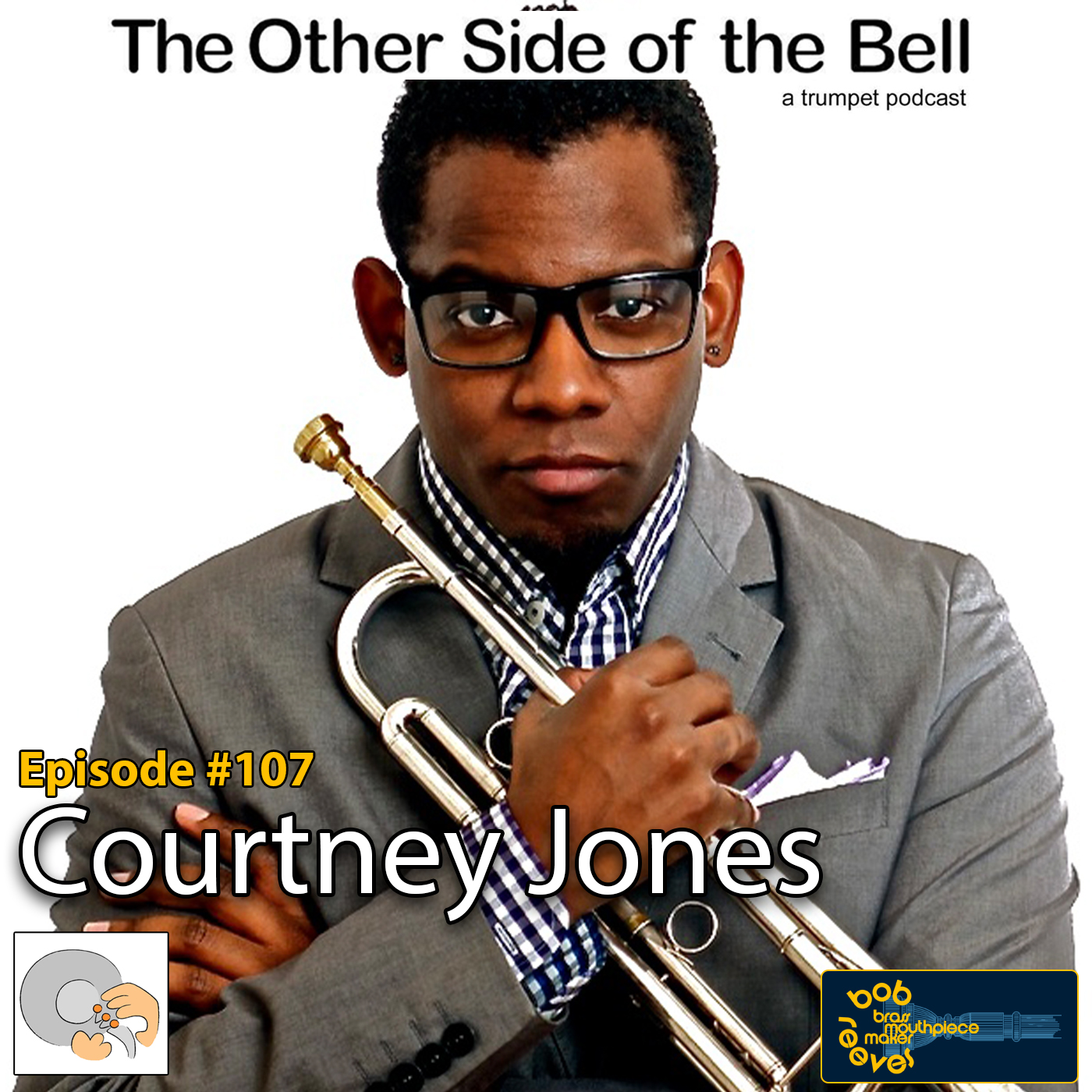
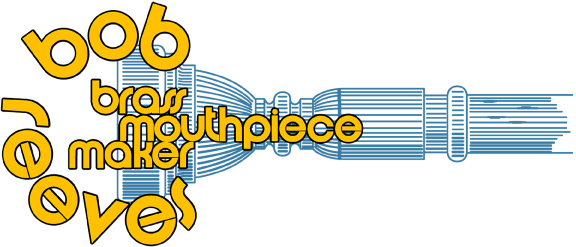



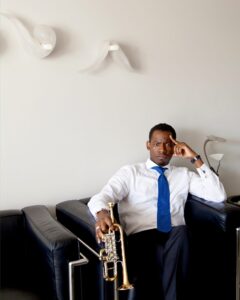 The newest directions in 21st Century trumpet performance are being explored and defined by Courtney Jones, an award-winning Bach performing and recording artist who has also emerged as a leading figure in contemporary performance and pedagogy, conducting, and service to inner-city youth through music outreach programs. An artist who transcends stylistic boundaries and in high demand as a clinician and adjudicator, Courtney has performed with classical ensembles and orchestras throughout the United States, internationally, and has won multiple solo awards and accolades through regional and national trumpet competitions.
The newest directions in 21st Century trumpet performance are being explored and defined by Courtney Jones, an award-winning Bach performing and recording artist who has also emerged as a leading figure in contemporary performance and pedagogy, conducting, and service to inner-city youth through music outreach programs. An artist who transcends stylistic boundaries and in high demand as a clinician and adjudicator, Courtney has performed with classical ensembles and orchestras throughout the United States, internationally, and has won multiple solo awards and accolades through regional and national trumpet competitions.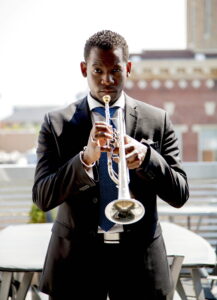
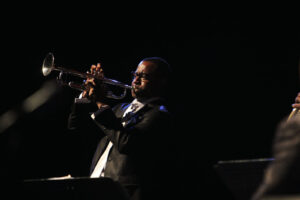 Prior to his appointment at Florida Atlantic University as the Assistant Professor of Trumpet & Artistic Director of Jazz and Chamber Ensembles, Jones w
Prior to his appointment at Florida Atlantic University as the Assistant Professor of Trumpet & Artistic Director of Jazz and Chamber Ensembles, Jones w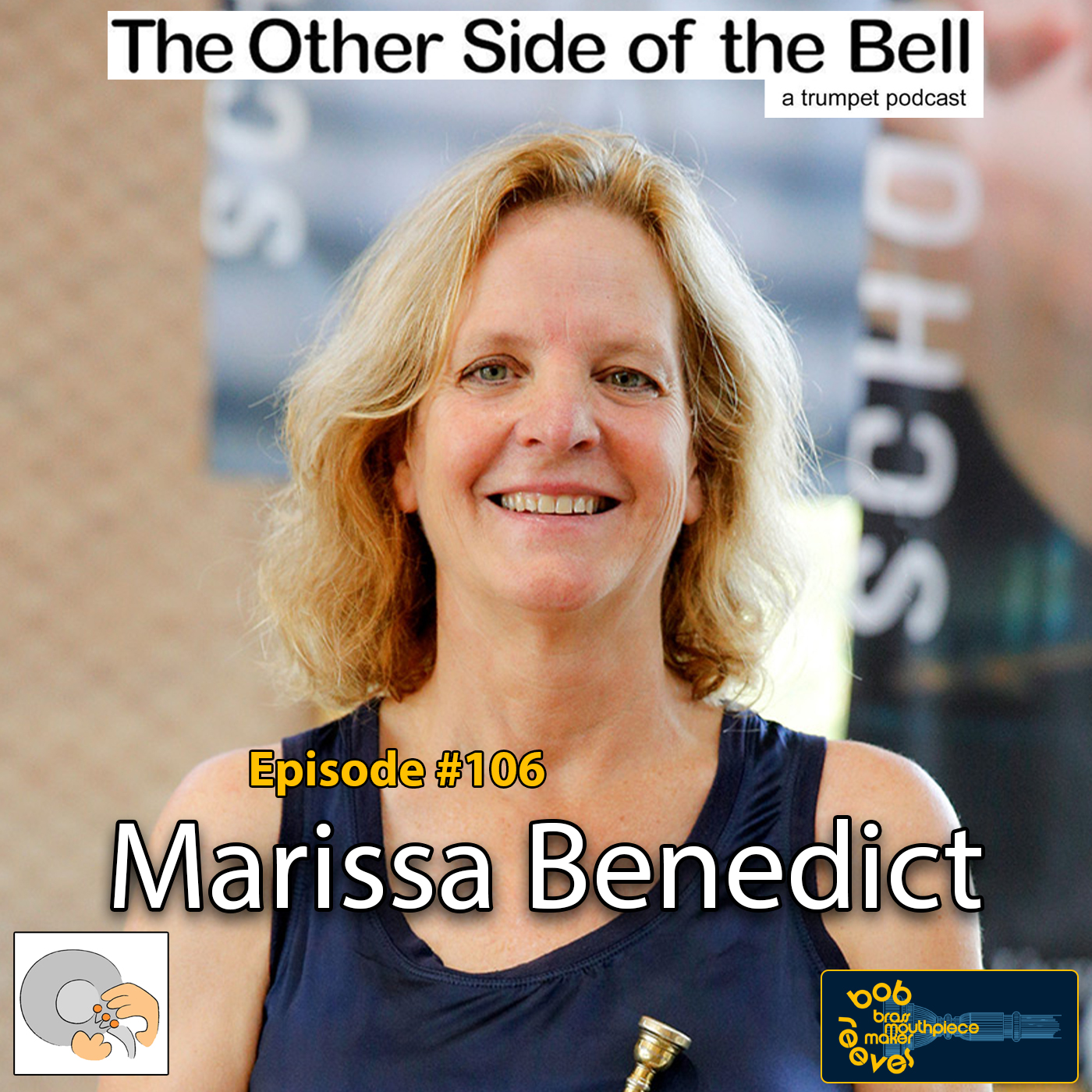
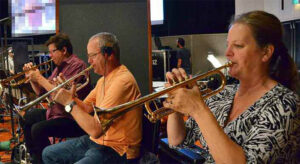 Marissa Benedict was born in San Francisco, California and raised in Marin County where she started playing piano at age 7, violin at age 9 and trumpet at age 10 (studying with Joe Alessi, Sr.). She continued playing all three instruments until graduating from high school and moving to Los Angeles to attend USC, earning a Bachelor of Music degree in Trumpet Performance (June 1984), studying with Boyde Hood.
Marissa Benedict was born in San Francisco, California and raised in Marin County where she started playing piano at age 7, violin at age 9 and trumpet at age 10 (studying with Joe Alessi, Sr.). She continued playing all three instruments until graduating from high school and moving to Los Angeles to attend USC, earning a Bachelor of Music degree in Trumpet Performance (June 1984), studying with Boyde Hood.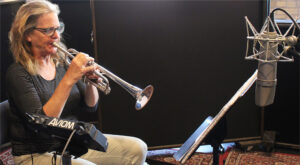
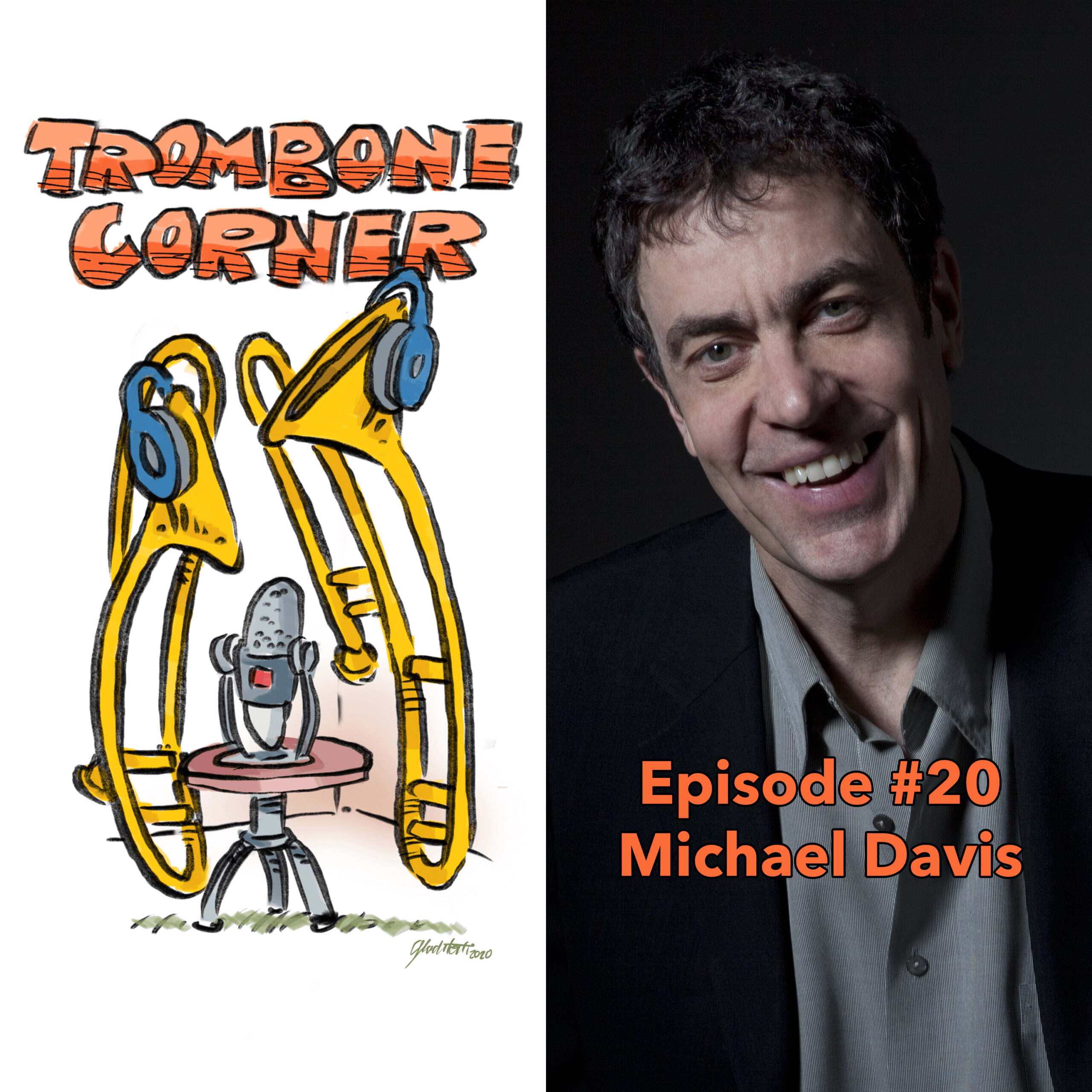
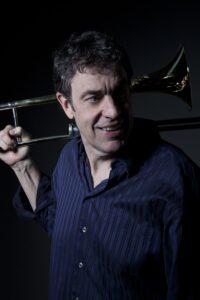 Trombonist/composer Michael Davis has enjoyed a diverse and acclaimed career over the past 40 years. Widely known as the trombonist for five world tours with the Rolling Stones, he toured and recorded extensively with Frank Sinatra, has released 14 CDs as a solo artist, composed over 150 works, authored a dozen books for brass players of all levels and appeared on over 500 CDs, television themes and motion picture soundtracks. He is the founder, creator and president of Hip-Bone Music, Inc. In 2011, the S.E. Shires Company released the Michael Davis signature model trombone and followed that in 2014 with the release of the Michael Davis+ trombone.
Trombonist/composer Michael Davis has enjoyed a diverse and acclaimed career over the past 40 years. Widely known as the trombonist for five world tours with the Rolling Stones, he toured and recorded extensively with Frank Sinatra, has released 14 CDs as a solo artist, composed over 150 works, authored a dozen books for brass players of all levels and appeared on over 500 CDs, television themes and motion picture soundtracks. He is the founder, creator and president of Hip-Bone Music, Inc. In 2011, the S.E. Shires Company released the Michael Davis signature model trombone and followed that in 2014 with the release of the Michael Davis+ trombone.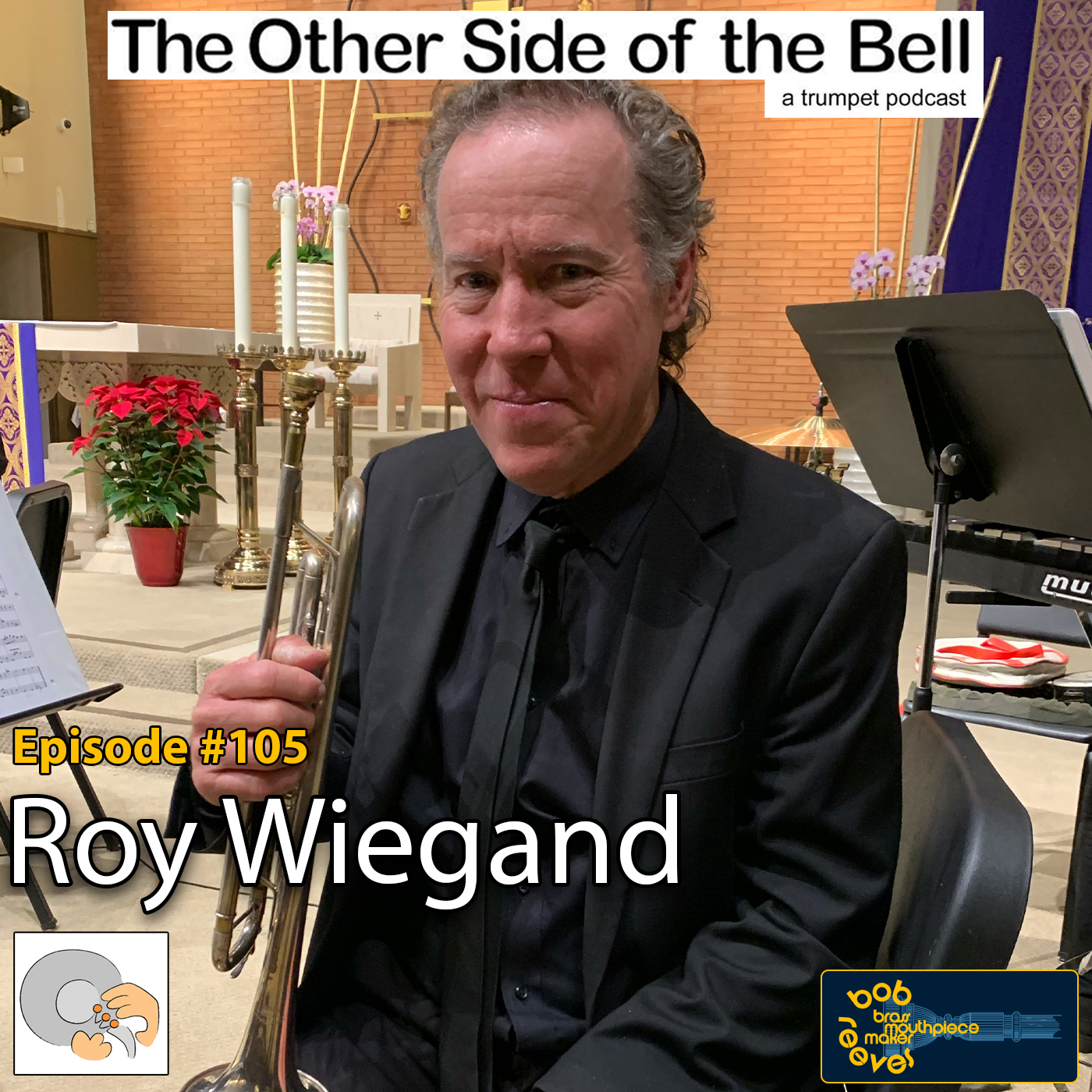
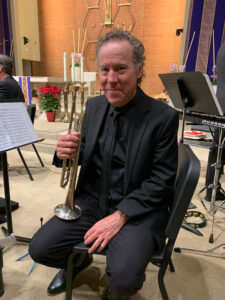


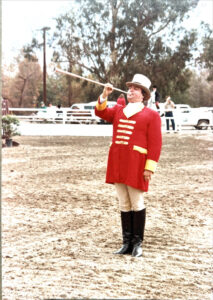
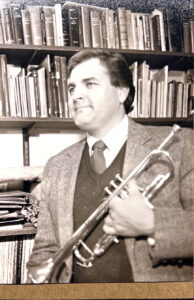
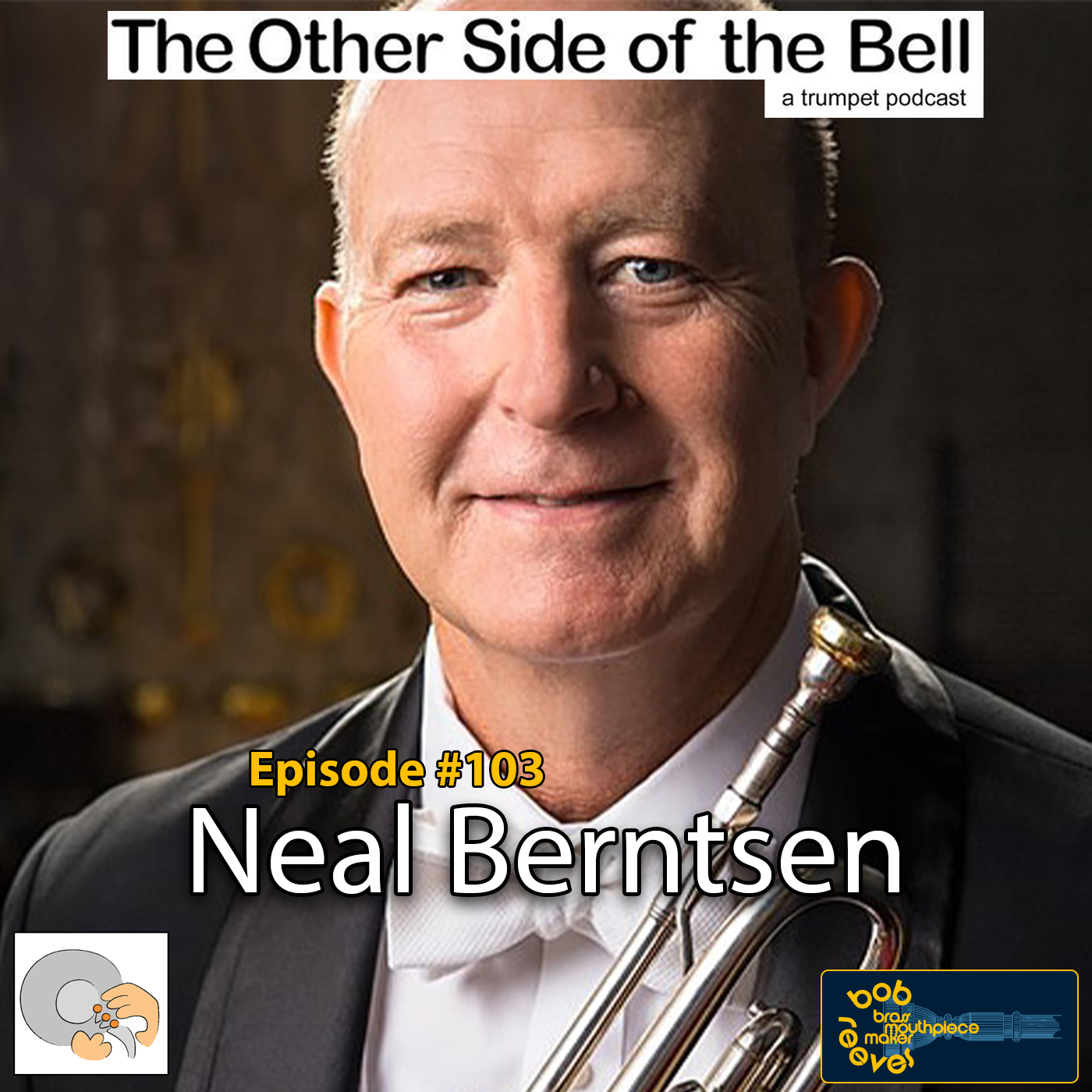
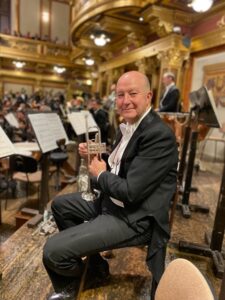 Neal Berntsen joined the Pittsburgh Symphony Orchestra trumpet section in March 1997, having been appointed at the invitation of Music Director Lorin Maazel in 1996. He is a native of Tacoma, Washington. He began his musical studies at age five playing the violin under the tutelage of his mother. By age eight he advanced to the trumpet and ultimately received a B.M. from the University of Puget Sound and a M.M. from Northwestern University. A former member of the Chicago Lyric Opera Orchestra and the Grant Park Symphony Orchestra, Neal has also performed as Principal trumpet for the Ravinia Festival Orchestra, Chicago Chamber Orchestra, Cincinatti Symphony Orchestra, San Diego Symphony Orchestra and the Bamberg Sinfoniker in Germany. Other orchestral performances have included the Chicago Symphony Orchestra, Boston Symphony Orchestra and Houston Symphony Orchestra.
Neal Berntsen joined the Pittsburgh Symphony Orchestra trumpet section in March 1997, having been appointed at the invitation of Music Director Lorin Maazel in 1996. He is a native of Tacoma, Washington. He began his musical studies at age five playing the violin under the tutelage of his mother. By age eight he advanced to the trumpet and ultimately received a B.M. from the University of Puget Sound and a M.M. from Northwestern University. A former member of the Chicago Lyric Opera Orchestra and the Grant Park Symphony Orchestra, Neal has also performed as Principal trumpet for the Ravinia Festival Orchestra, Chicago Chamber Orchestra, Cincinatti Symphony Orchestra, San Diego Symphony Orchestra and the Bamberg Sinfoniker in Germany. Other orchestral performances have included the Chicago Symphony Orchestra, Boston Symphony Orchestra and Houston Symphony Orchestra.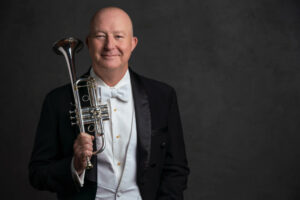
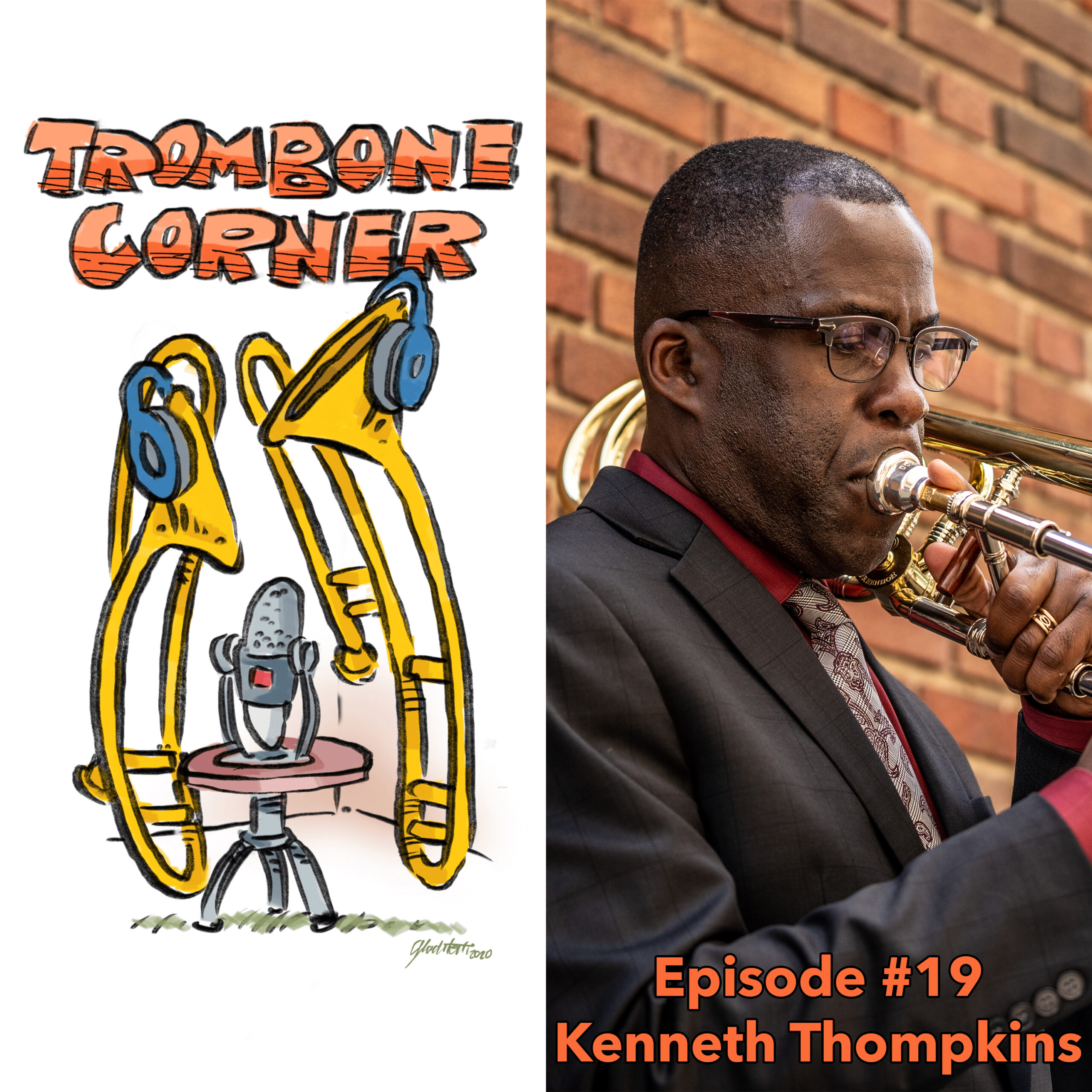
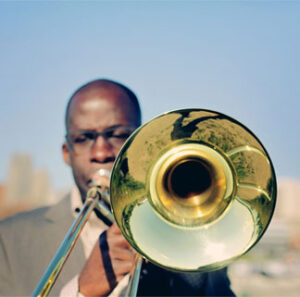
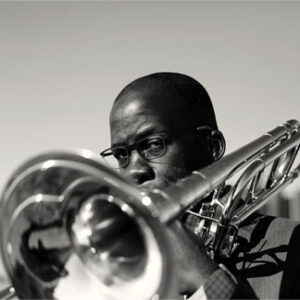
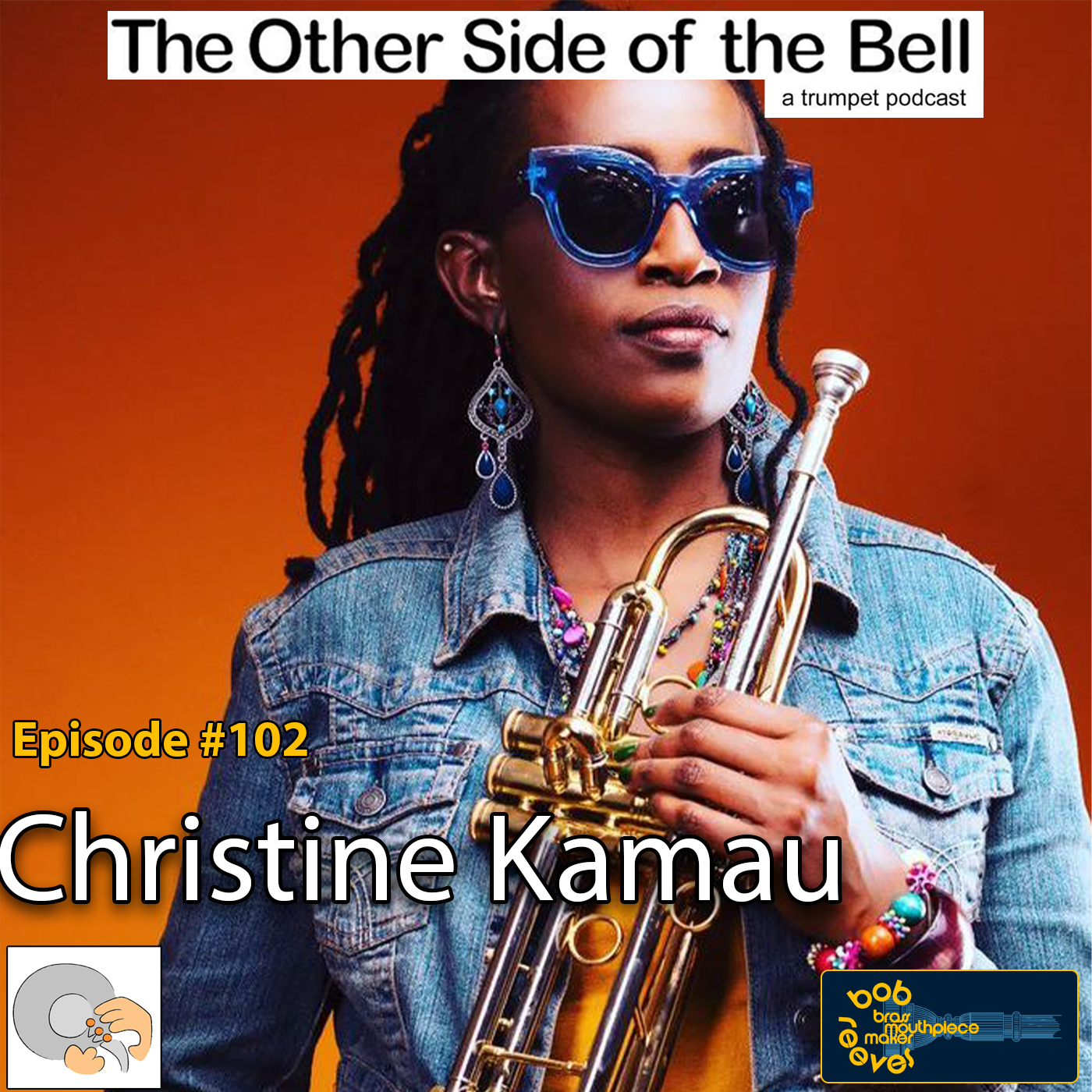
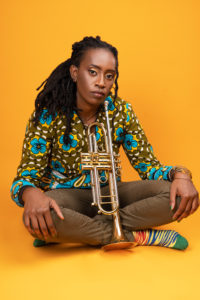 Christine Kamau is a Trumpeter, Composer and Performing Artist from Kenya. Her Trumpet playing has been described as ‘a wide-eared approach to jazz, paying attention to various styles without losing the jazz tonality’. Kamau credits her musical influences to Hugh Masekela, Maroon Commandos, Miles Davis among others.
Christine Kamau is a Trumpeter, Composer and Performing Artist from Kenya. Her Trumpet playing has been described as ‘a wide-eared approach to jazz, paying attention to various styles without losing the jazz tonality’. Kamau credits her musical influences to Hugh Masekela, Maroon Commandos, Miles Davis among others.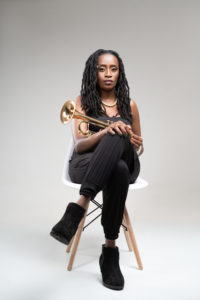
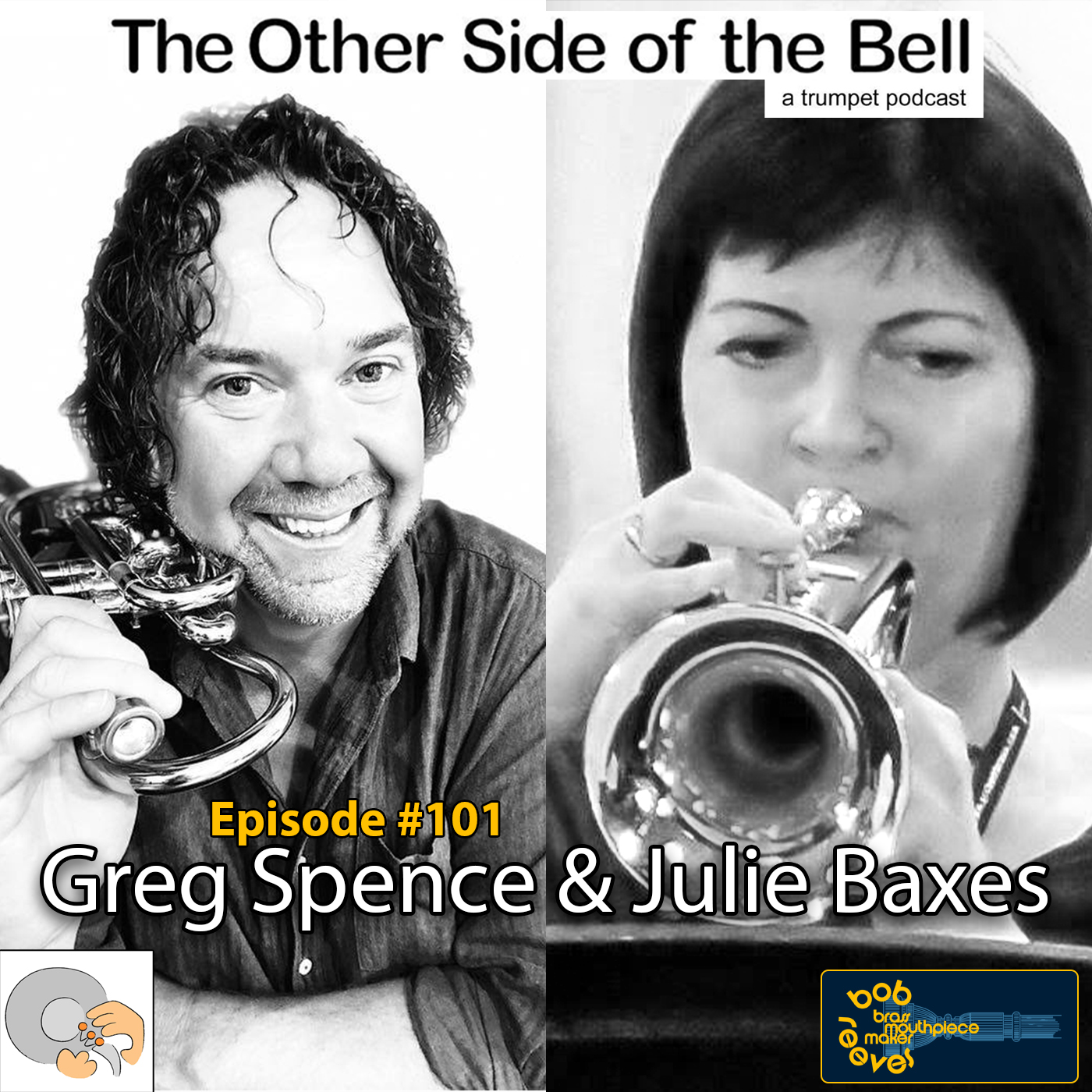
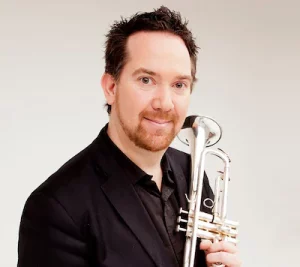
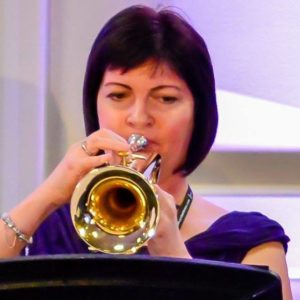
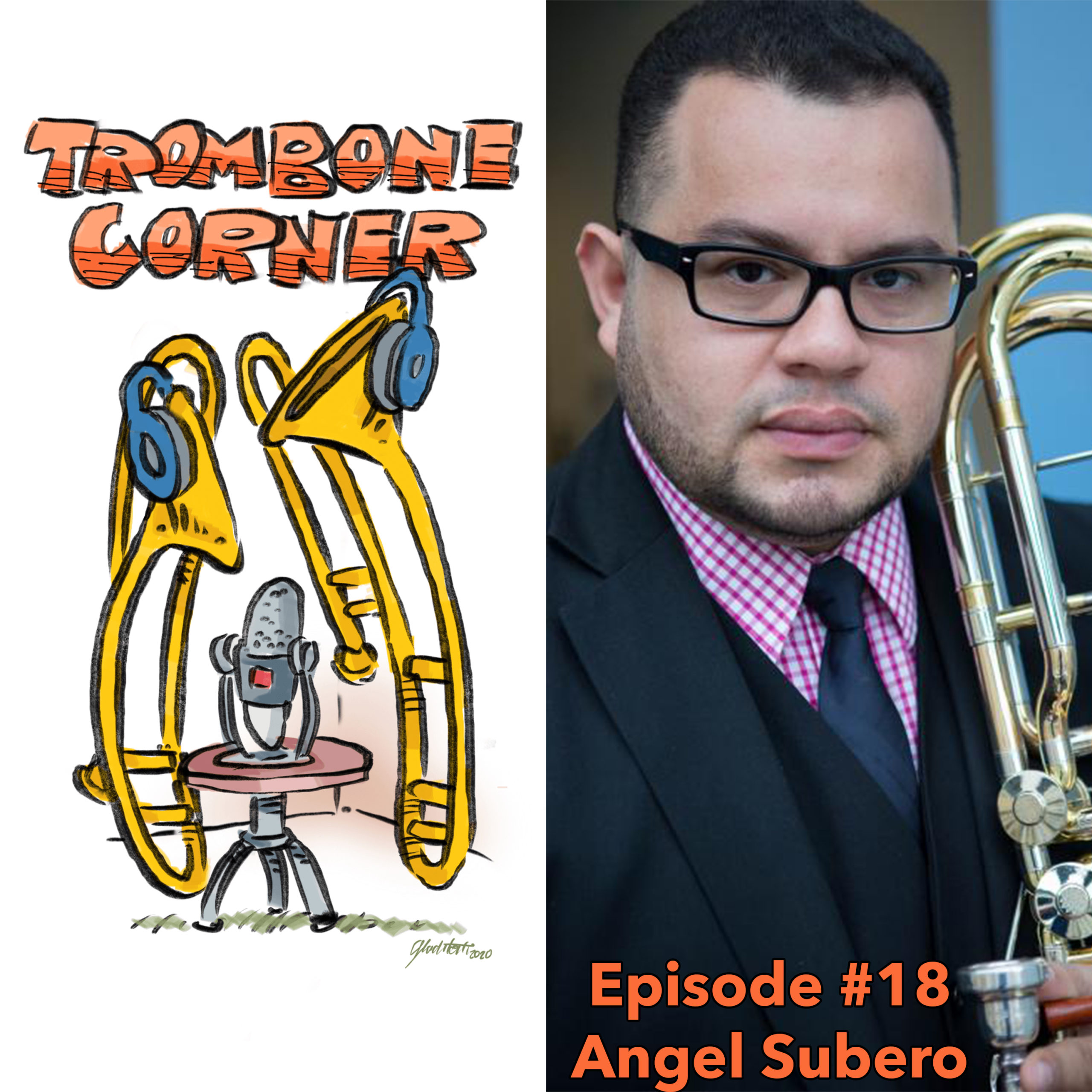
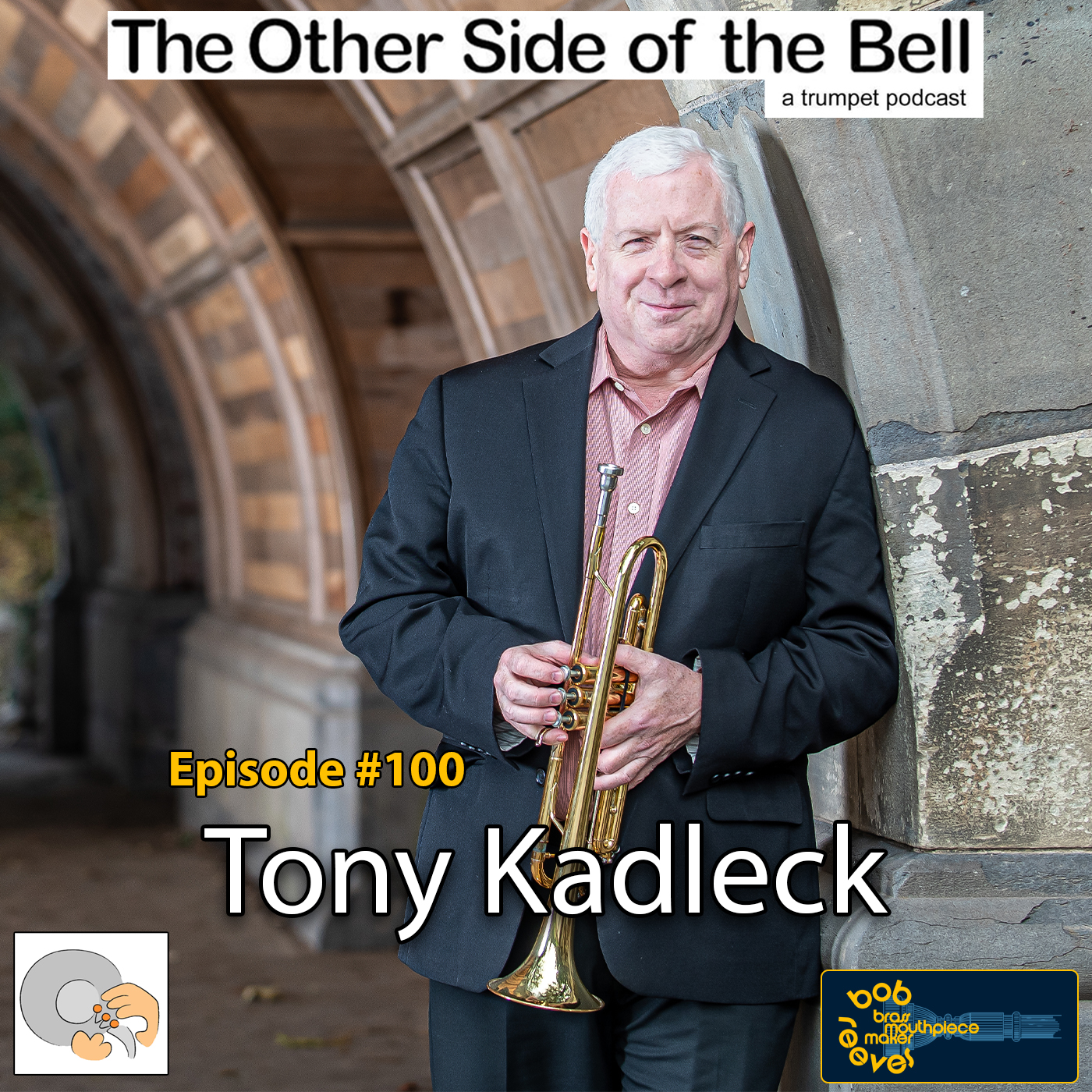
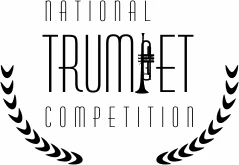 Join us in Boulder, Colorado for a weekend full of music, innovation, and everything trumpet!
Join us in Boulder, Colorado for a weekend full of music, innovation, and everything trumpet!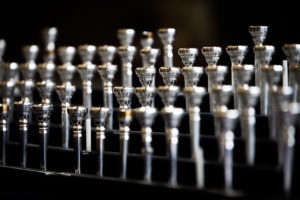 An impressive selection of over 300 trumpet mouthpieces, including the brand new for 2023 #19 commercial backbore and the BOOM★ Dan Rosenboom Signature Model.
An impressive selection of over 300 trumpet mouthpieces, including the brand new for 2023 #19 commercial backbore and the BOOM★ Dan Rosenboom Signature Model.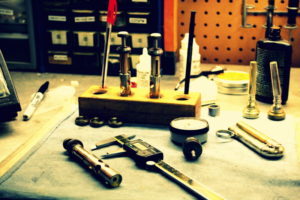 Are you looking to take your trumpet playing to the next level? Don’t miss this incredible opportunity to get a Bob Reeves Patented Valve Alignment right at the National Trumpet Competition. No need to ship your trumpet to our shop – simply drop it off at our booth and pick it up the next day! We’ll also have a limited number of same-day appointments available.
Are you looking to take your trumpet playing to the next level? Don’t miss this incredible opportunity to get a Bob Reeves Patented Valve Alignment right at the National Trumpet Competition. No need to ship your trumpet to our shop – simply drop it off at our booth and pick it up the next day! We’ll also have a limited number of same-day appointments available.